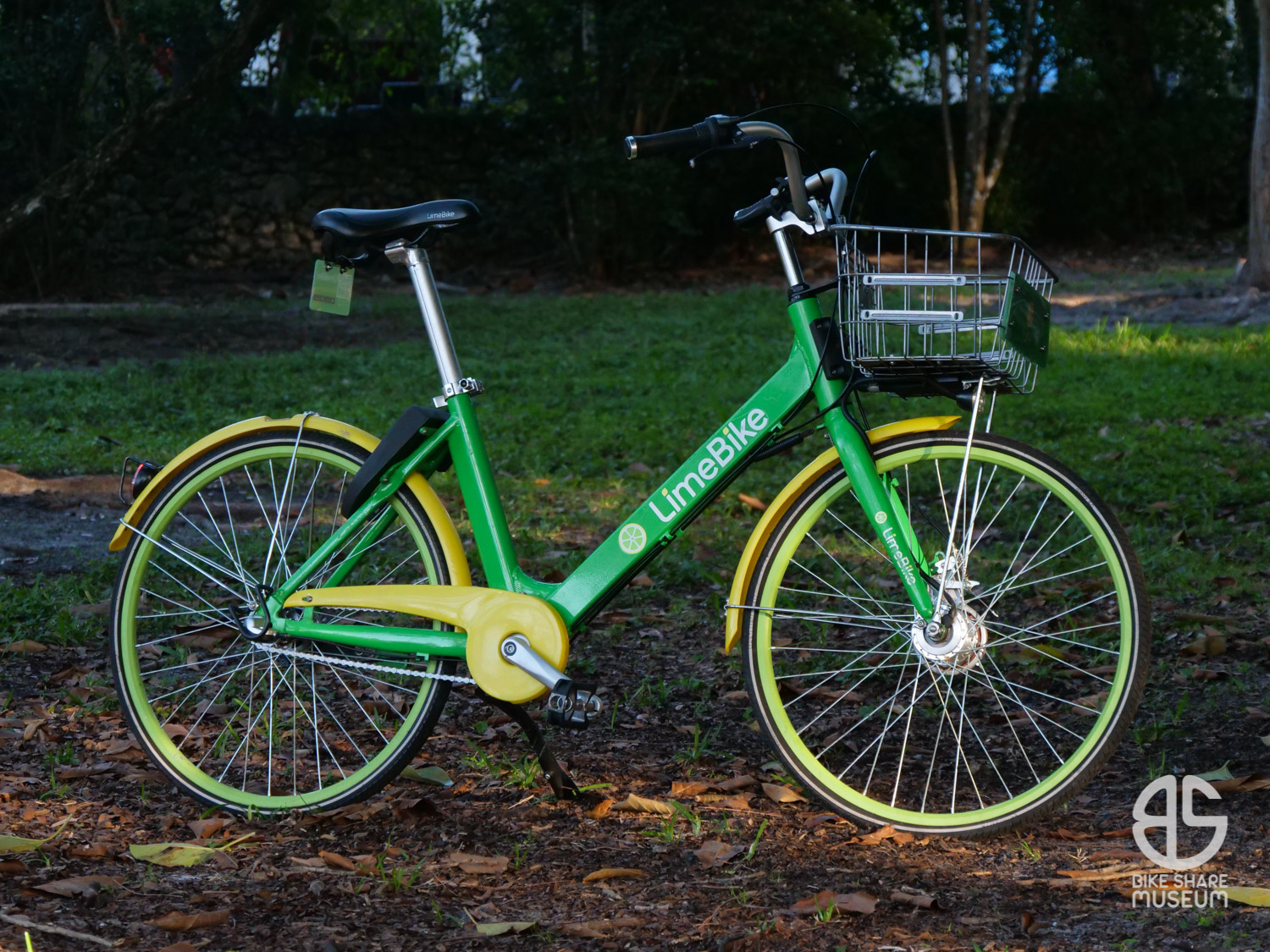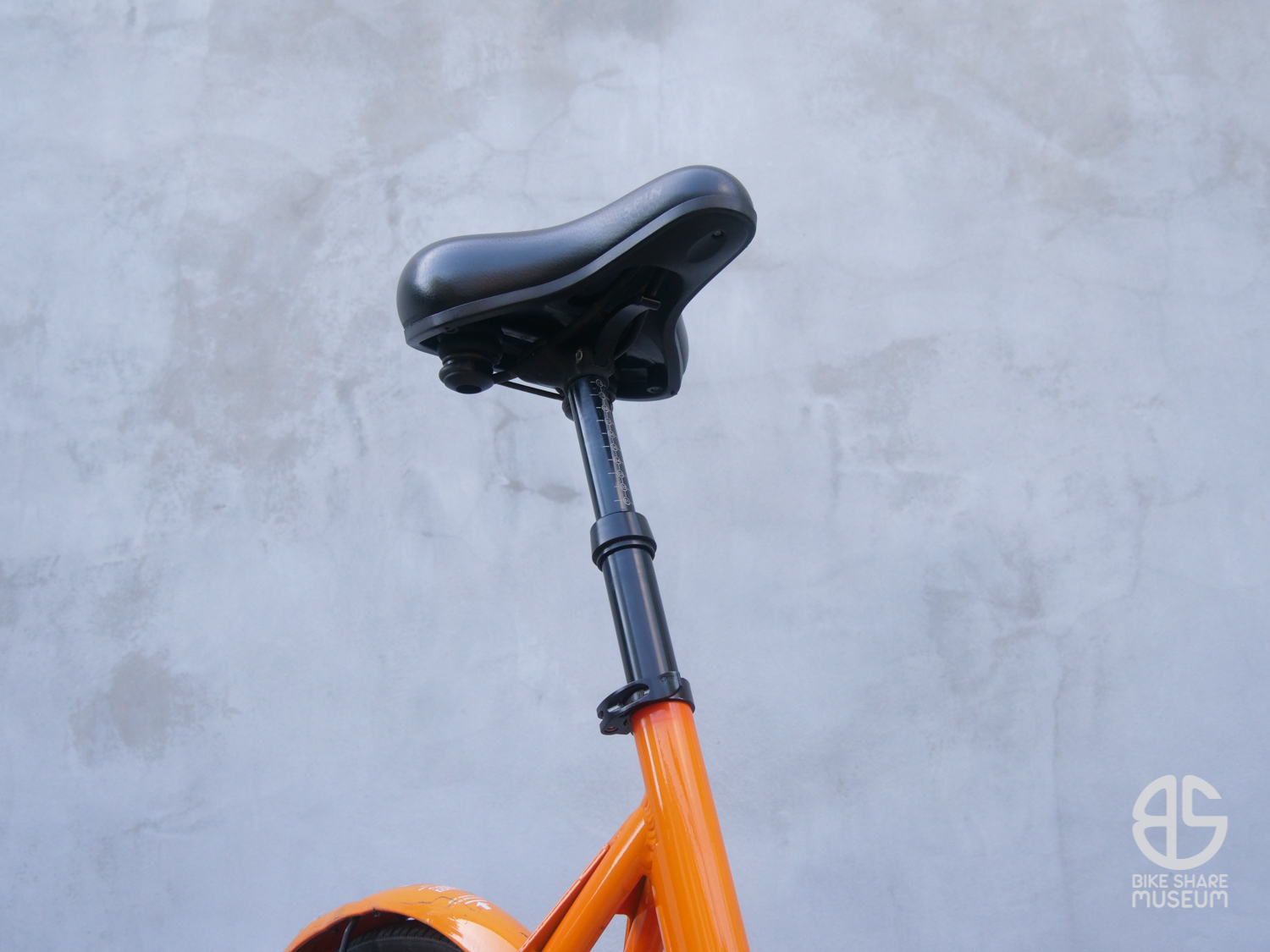LimeBike #122-949
2018 Lime-B
Specsheet
Gallery
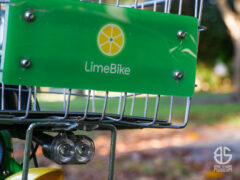

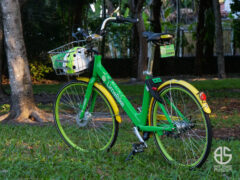

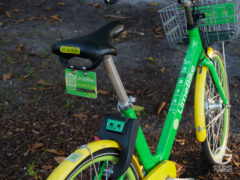
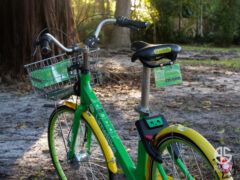

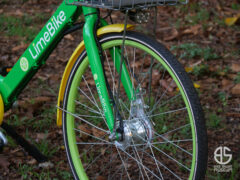

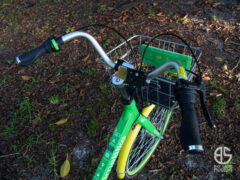
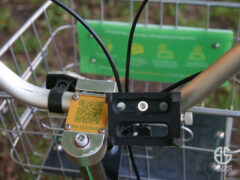
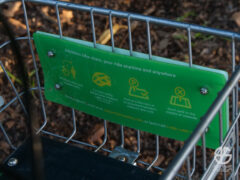
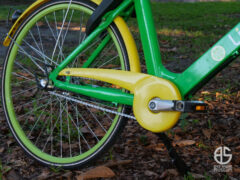
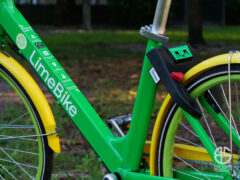
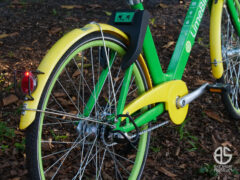
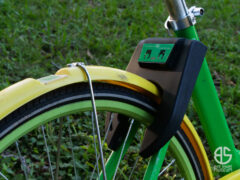


Bicycle Bio
Trying to legally acquire a LimeBike for the museum proved a nearly year-long task. When we found this one in mid-2019, LimeBikes weren’t as common to find on the used market as they are now. Since then, warehouses – especially on the west coast – have cropped up with containers of brand-new Lime-B’s. Even Lime-E’s – ever so few – crop up.
Still, some ex-deployed bikes do survive, and this one escaped Miami-Dade County’s infamous August 2018 crackdown on dockless providers – in addition to Lime’s eventual scrapping of the local B fleet.
I approached numerous cities to see if any had been removed from the public ROW or seized by subcontracted towing firms, but – apparently – I was a few months late to the party. Trying to get whatever was still out there proved to be quite the task. Eventually, thanks to friends at Miami-Dade Parks, someone remembered a Lime-B that Lime had failed to retrieve and had since become County property.
Days from being thrown in a garbage bin for good, this Lime-B was pushed through the necessary channels to became part of the Museum. I’m told that Parks staff were speechless to learn that anyone had the slightest interest in it.
Enter the battered and beaten carcass of Lime-B #122-949.
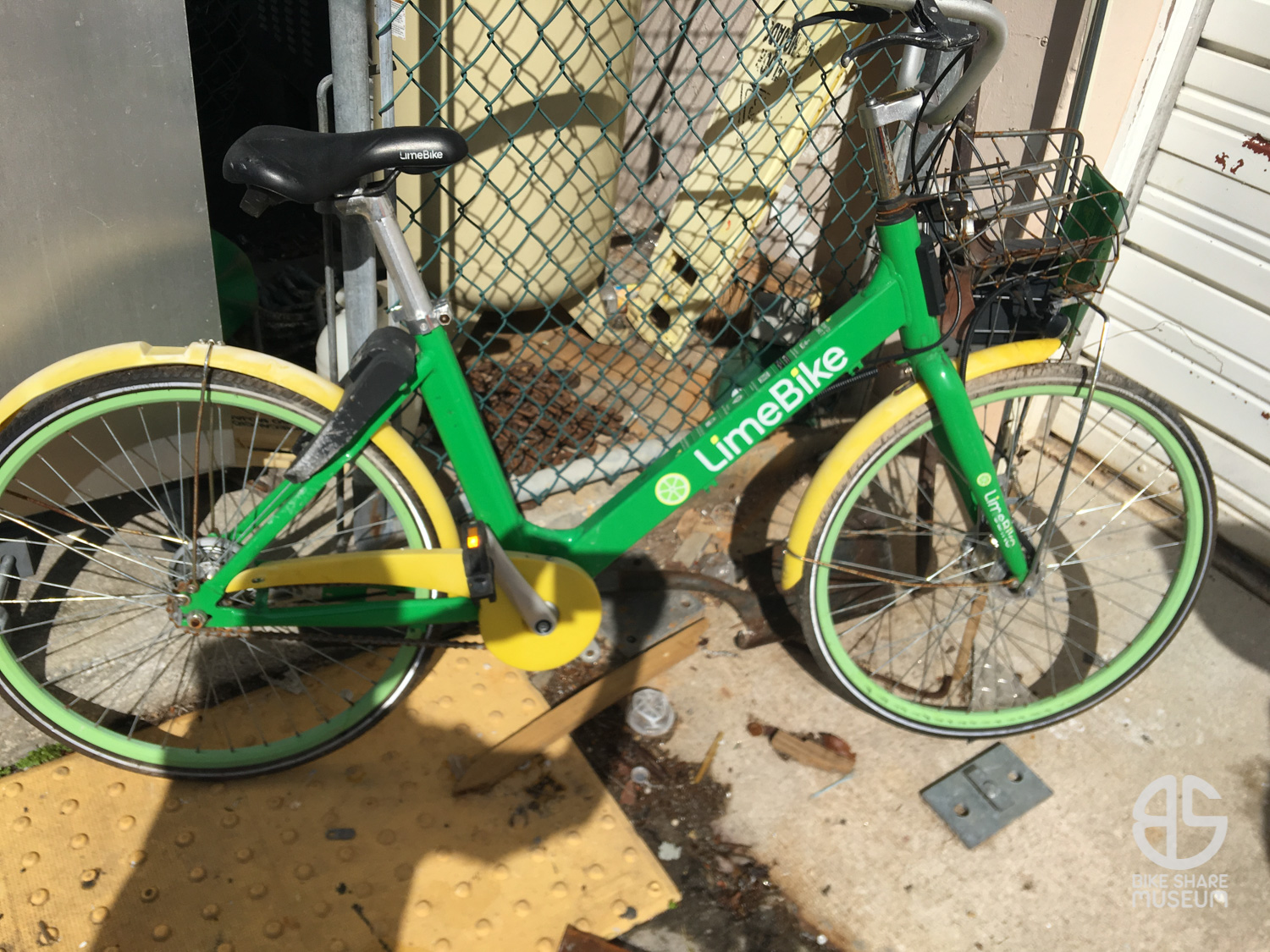
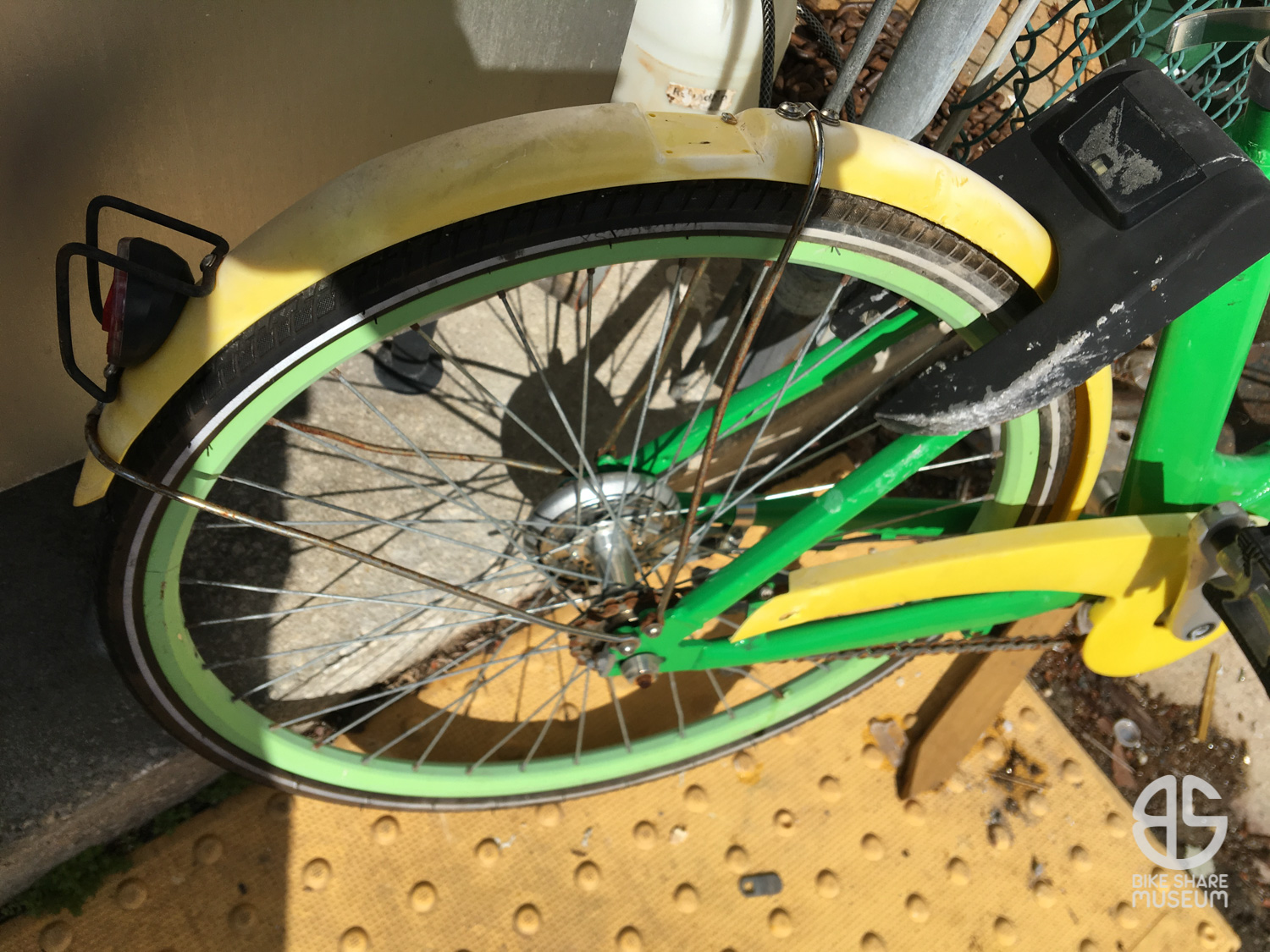
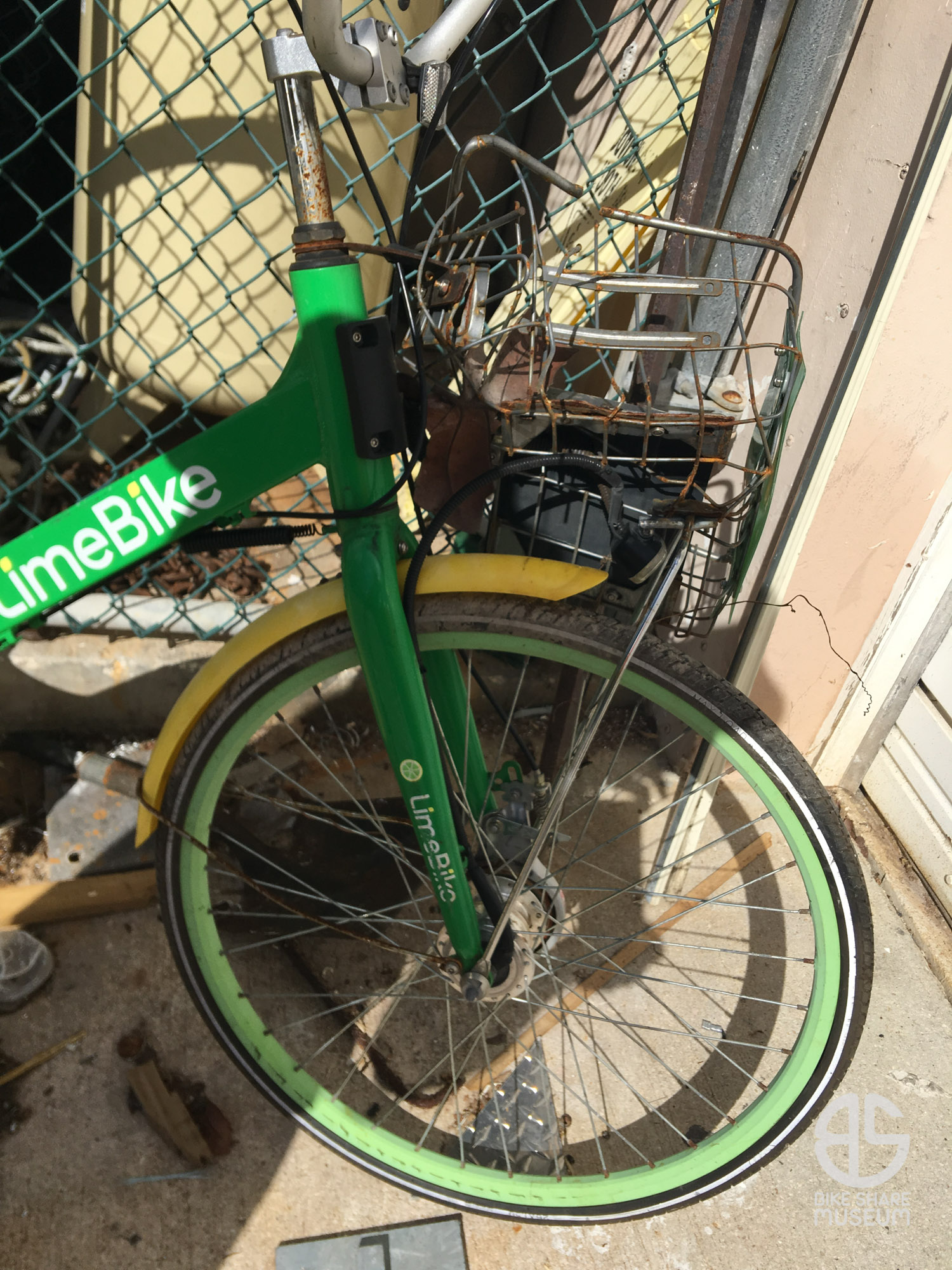
At a distance, it appeared to be an intact bike, disfigured only by its severely damaged front basket. But a closer look revealed tire marks on the front rim, and further inspection unearthed that a few spokes had pulled through the rim from the stress. The impact also bent the original handlebar. Our original article about this bike goes into all the gory details.
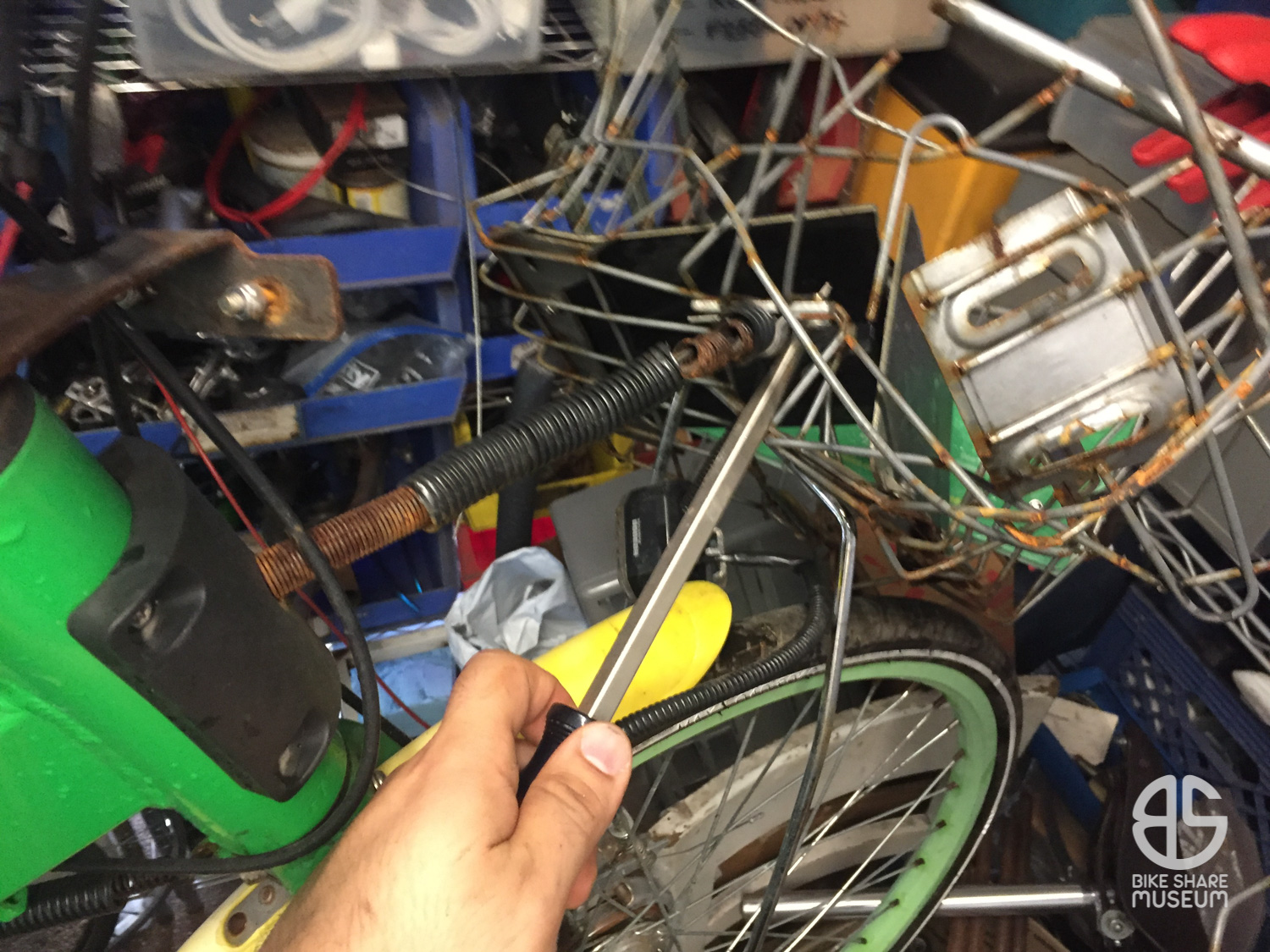
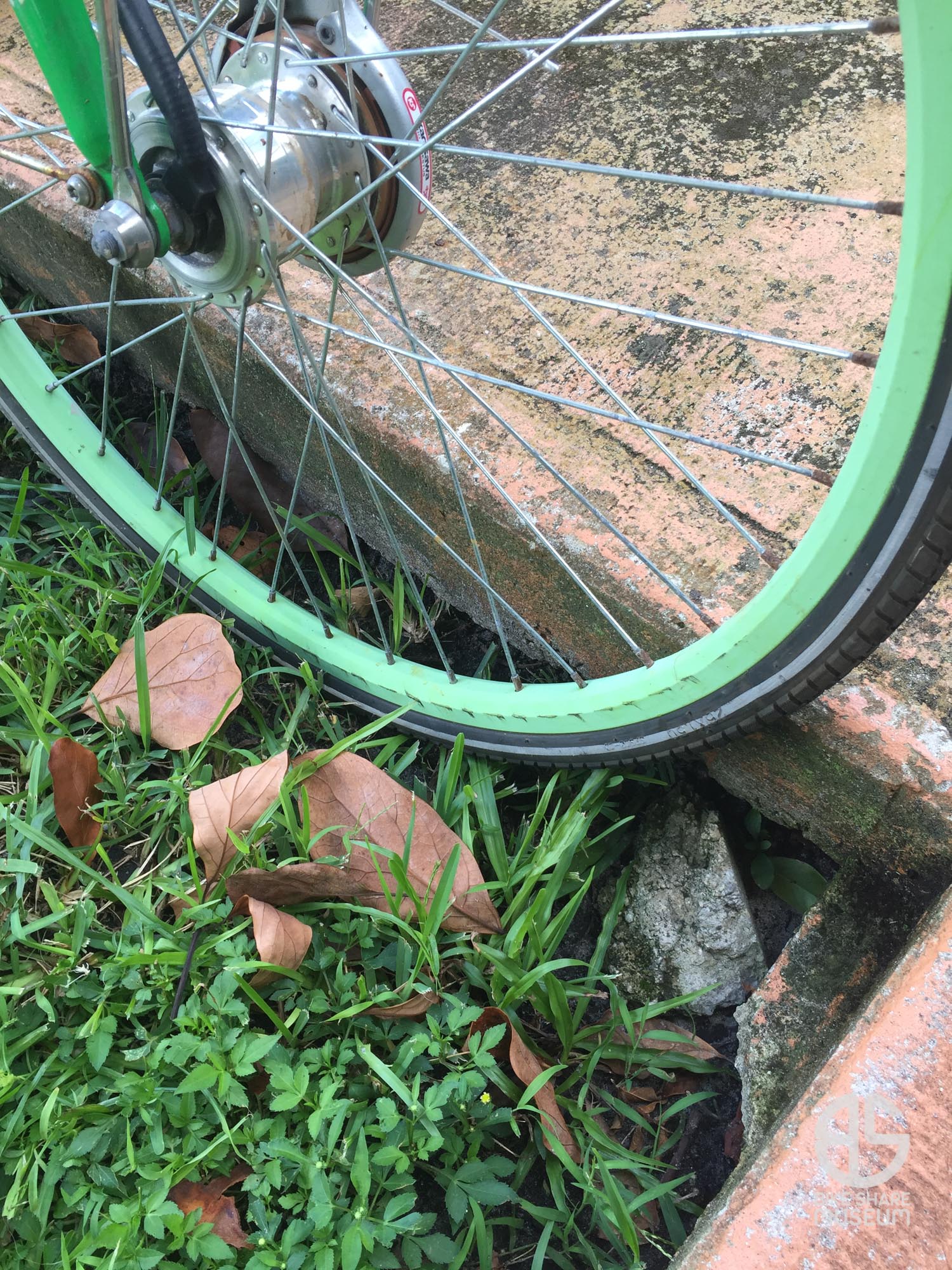
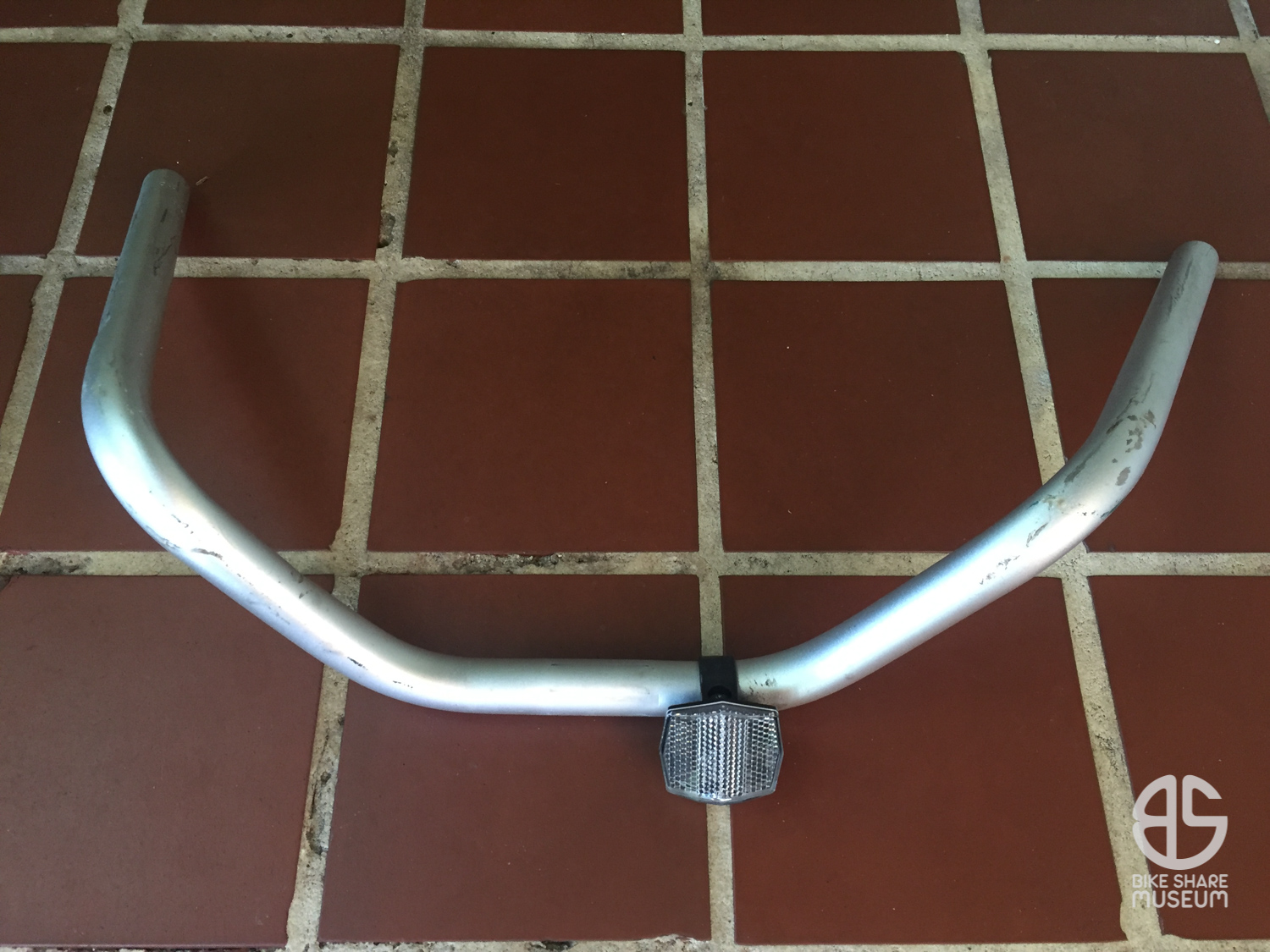
Somehow, the frame and fork emerged from this abuse straight as an arrow.
I said the frame was straight, right? Well, I didn’t say anything about the bits on the frame. Sure enough, the chainguard mounting tab had been kicked inboard. Not only was it bent, but it was now rubbing against the chain – which had already sawed through most of it.
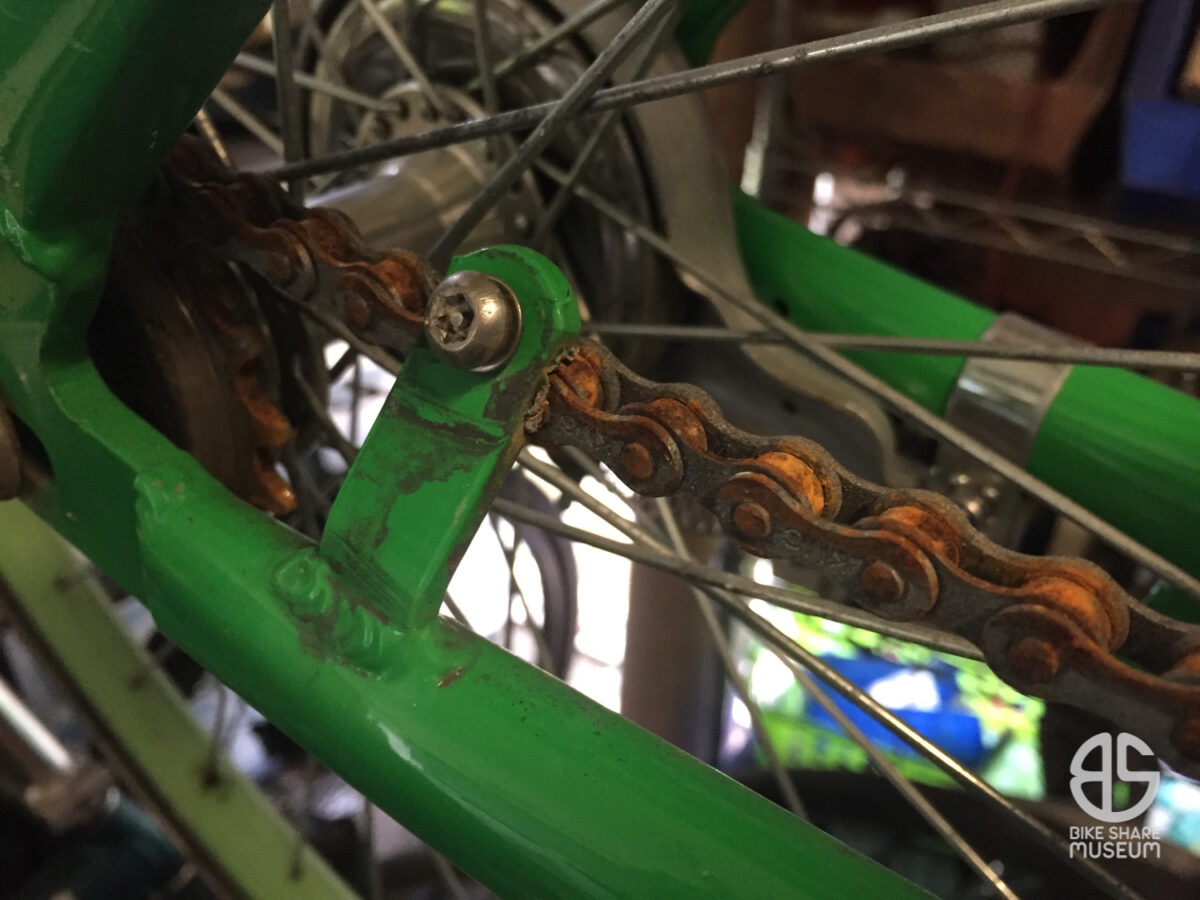
Unlike steel, you just can’t straighten anything with an aluminum frame. Once it’s bent, it stays bent – until it breaks off.
…ah, the joys of JB Weld.
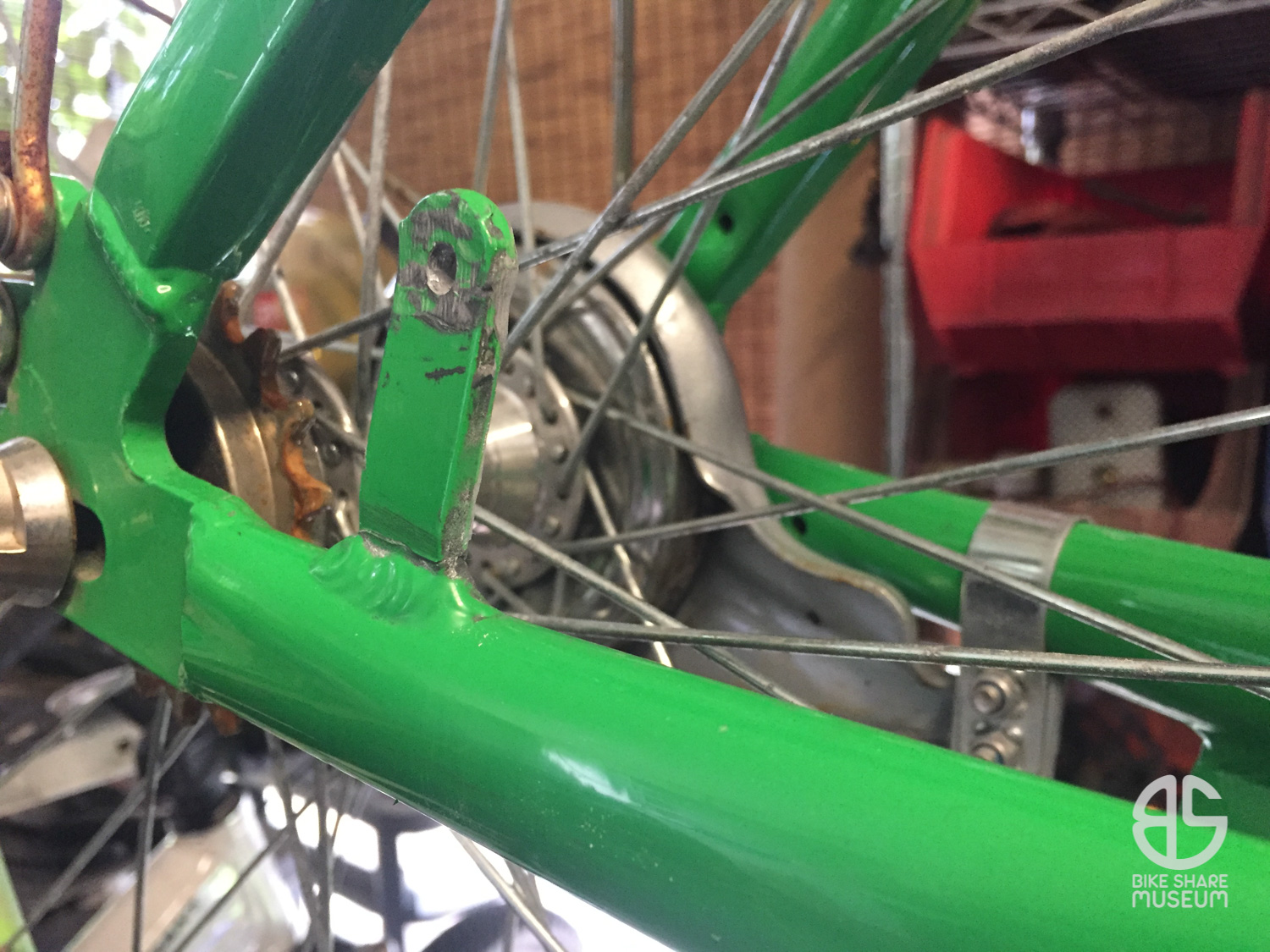
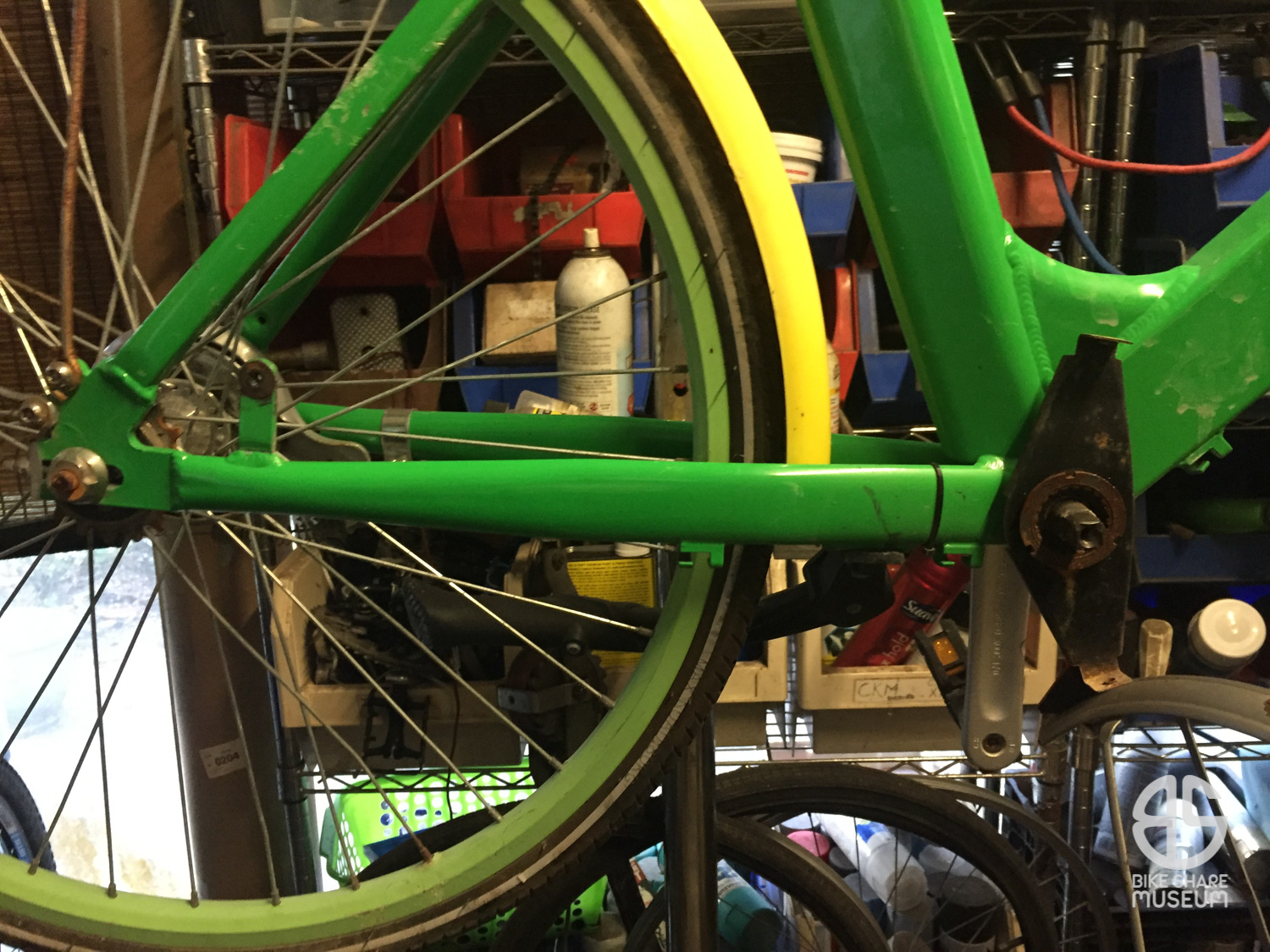
With a washer for reinforcement, the tab – fragile as it is – is back where it belongs. Mint? No. A repair to be proud of? Probably not. Did it ensure preservation of an actual Lime-B? Yes. If it wasn’t for this fix, I’d still be hunting about for another candidate.
But this left just about everything else in need of replacement. I went on an initial whirlwind of parts restoration, sanding off the UV-damaged plastic from the fenders and polishing them out, removing the rust off the stays with oxalic acid, and generally wondering what I’d do about the wrecked rims.
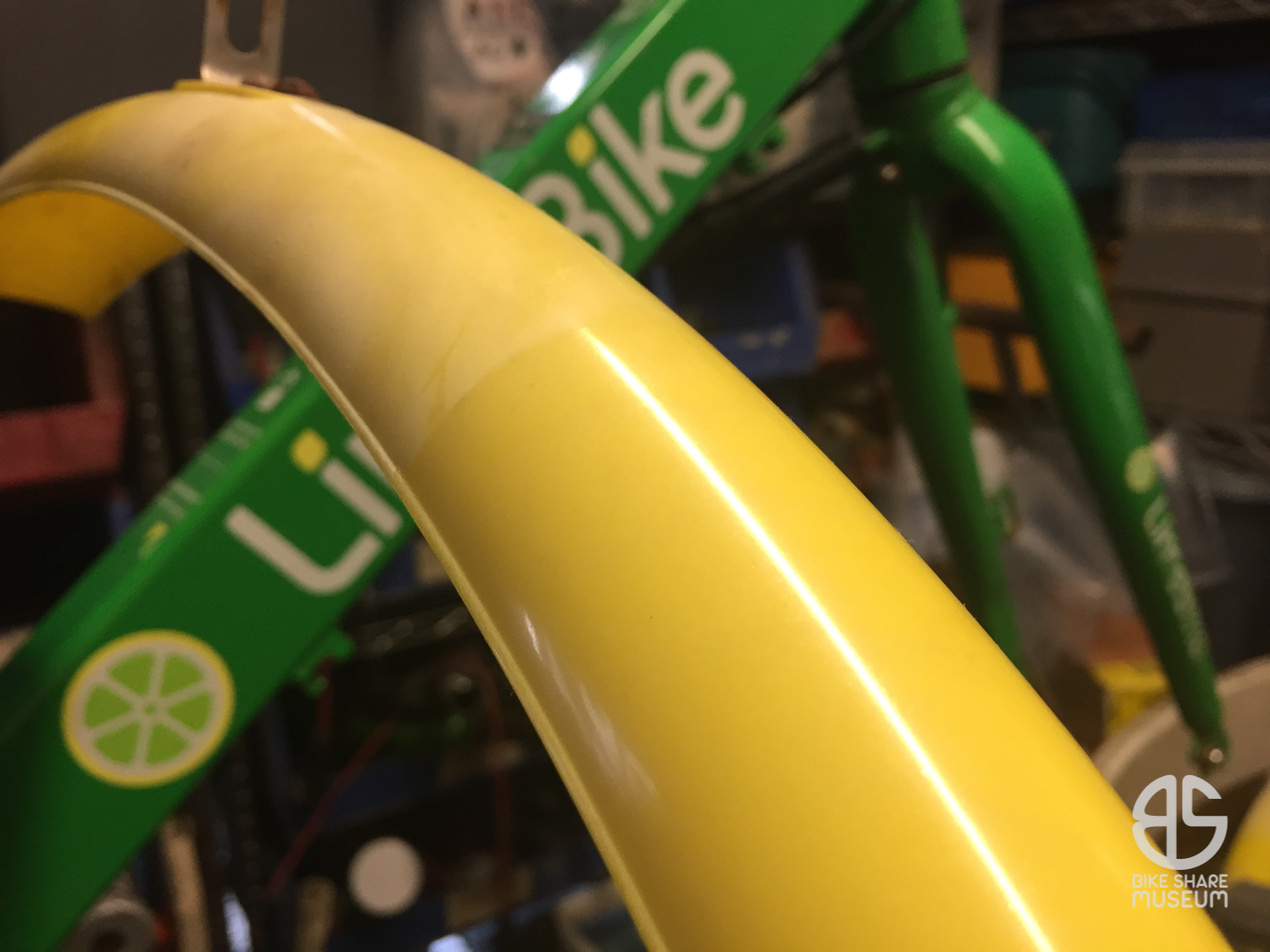
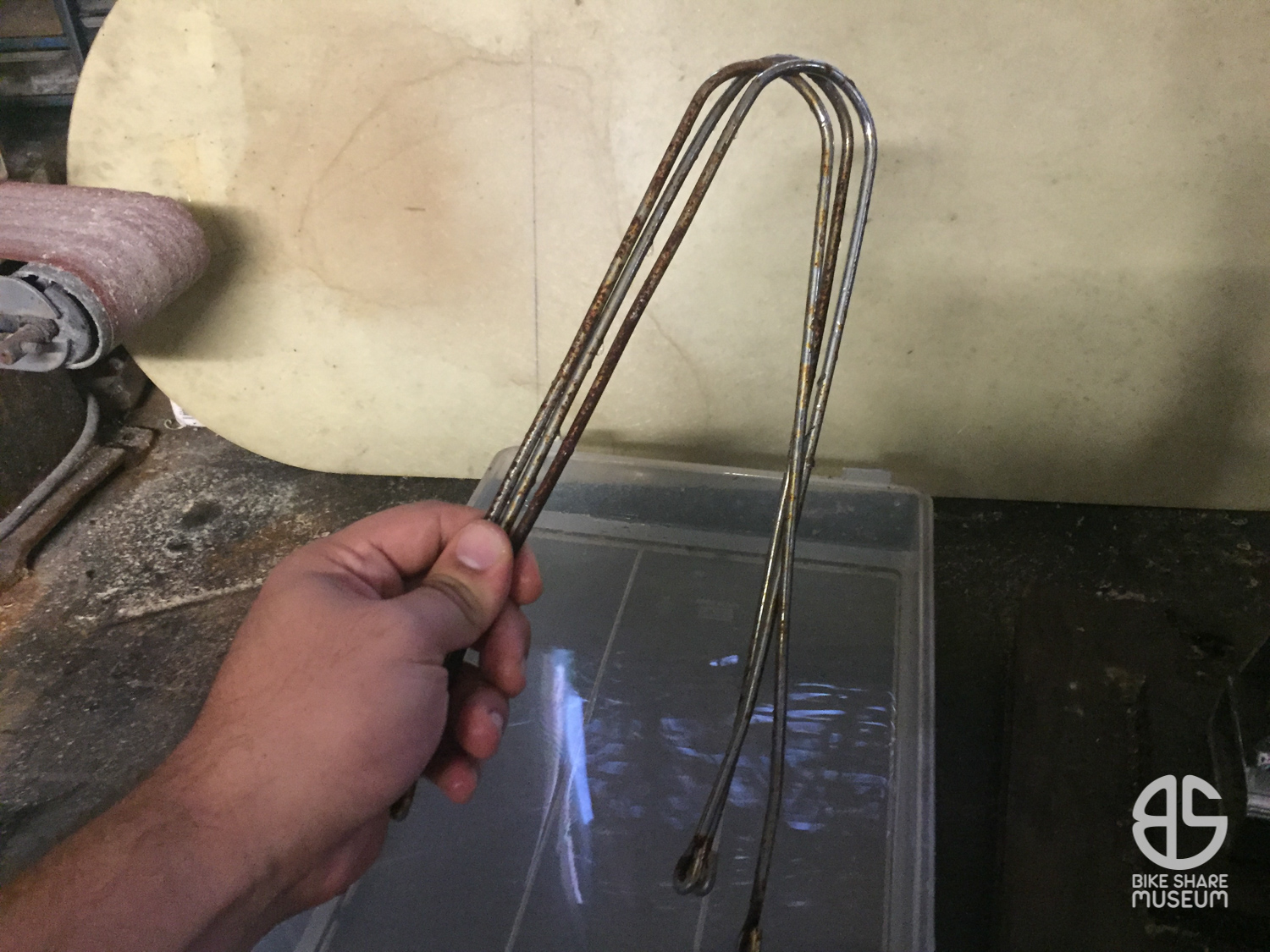
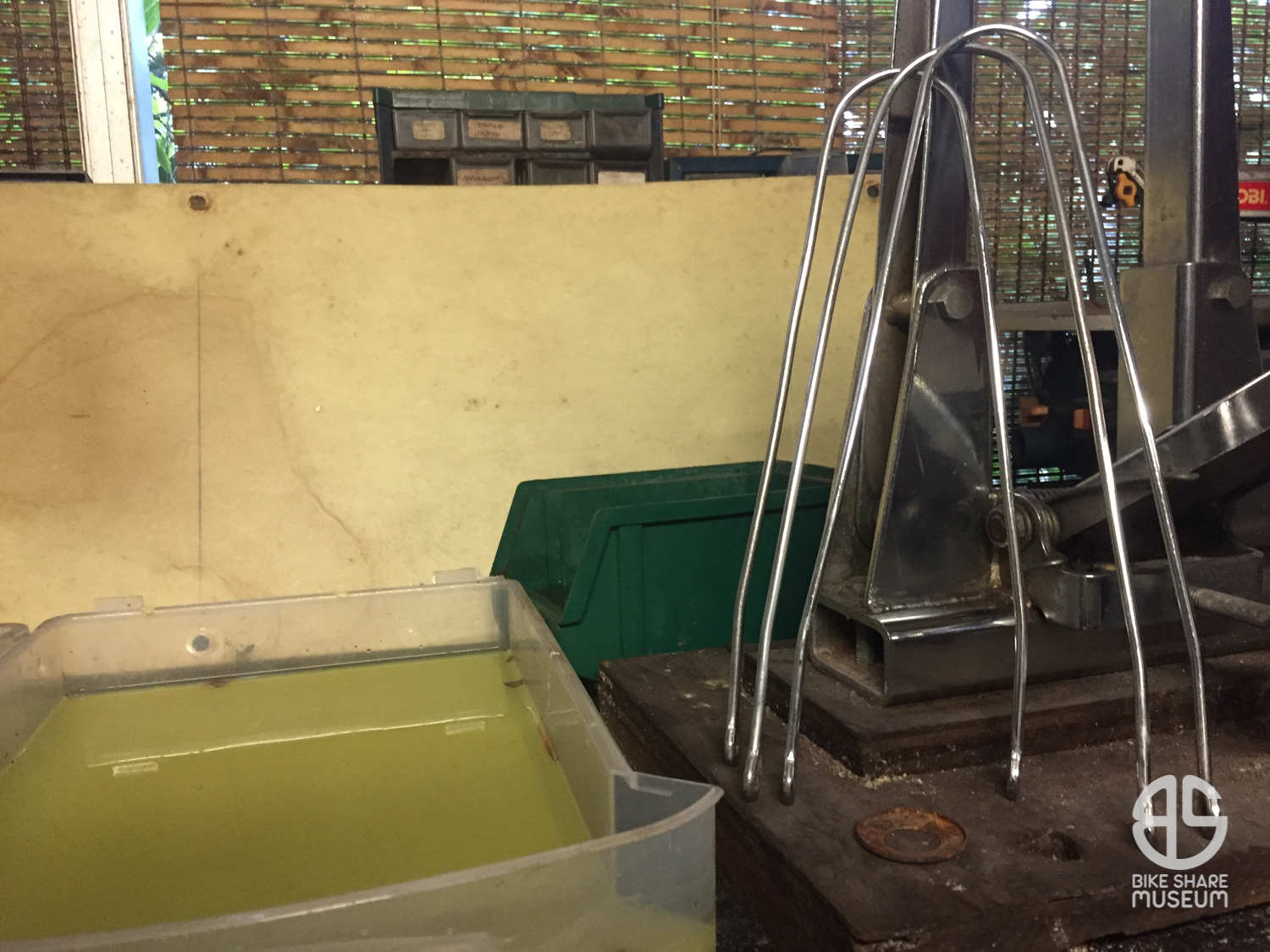
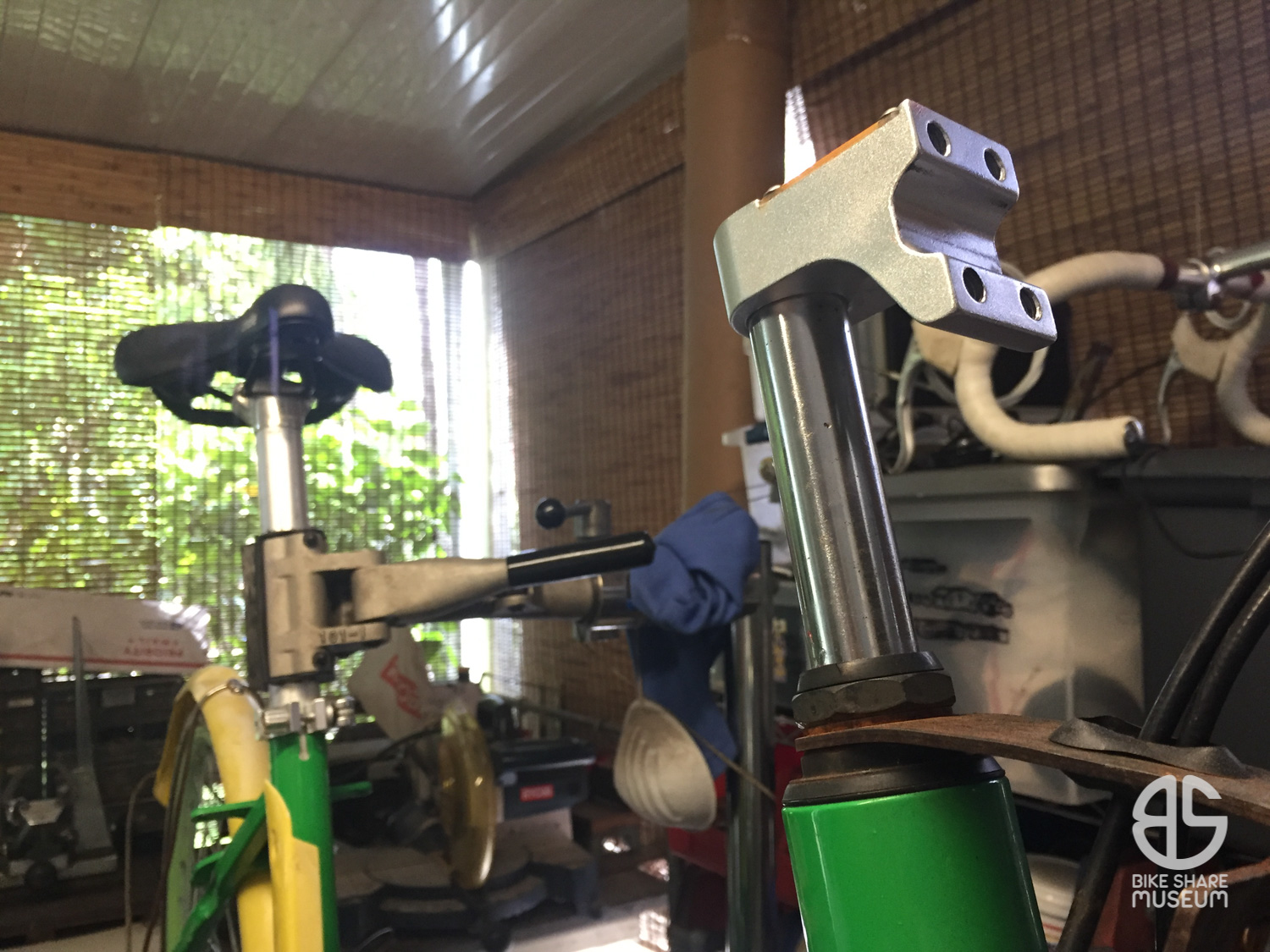
And guess what? Parks eventually dug up another abandoned Lime-B, only this one was nearly mint…if you ignored the fact that vandals had torn the lock plate right off the frame at its welds.
Nevertheless, it was good news for #122-949. I chose to use a few of the restored parts – including the original stem with matching QR code – but for the most part, transplanted almost everything else from the donor, which was in much better shape.
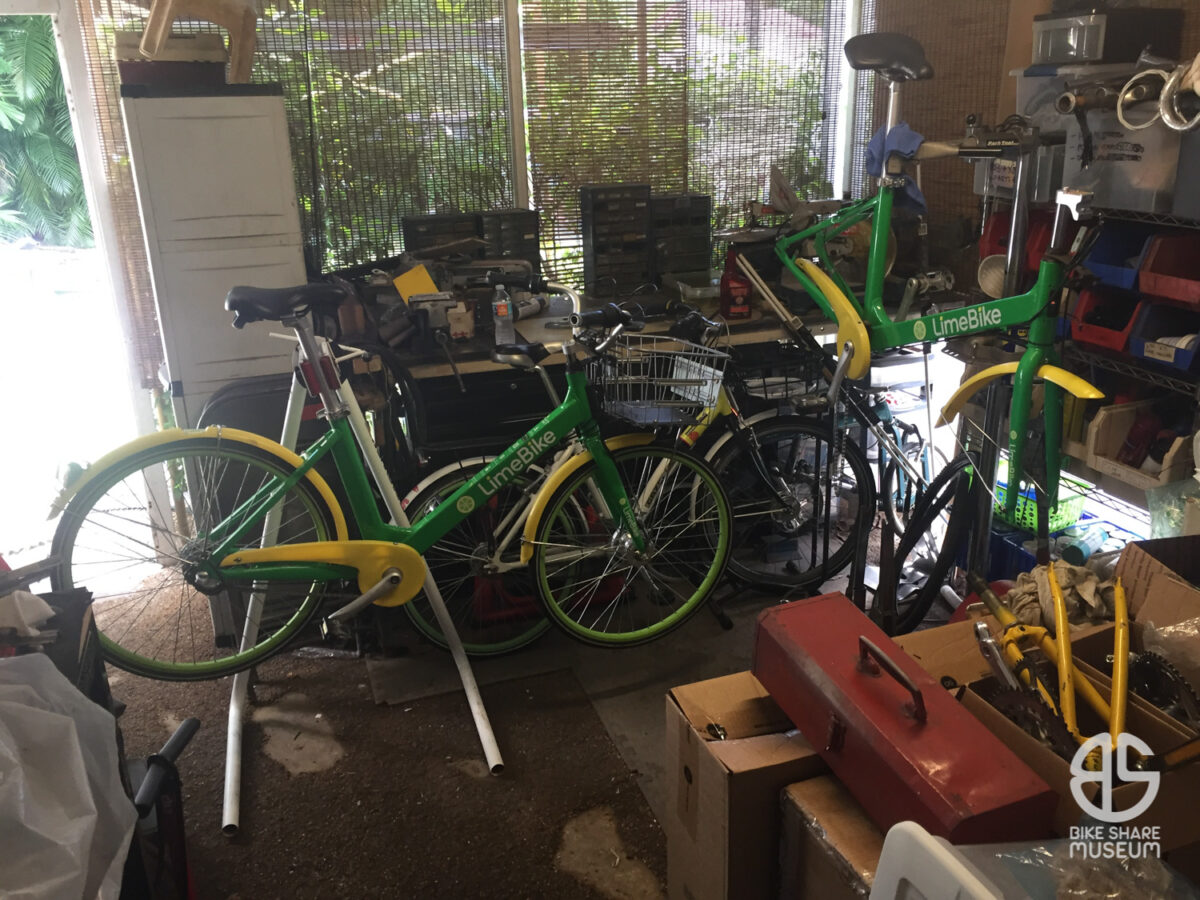
The donor bike was also a factory 3-speed, which meant #122-949 would get a bit of an upgrade in the process. All the correct parts were on the donor, so it looks as if it came like that in the first place.
At this point, the lock remained the one detail still missing. The trashed original from #122-949 was the only one I had to work with at the time and the aluminum shell has been abused quite a bit. These Lime locks are armored well to prevent vandalism, but the lower edge doesn’t hold up, cosmetically:
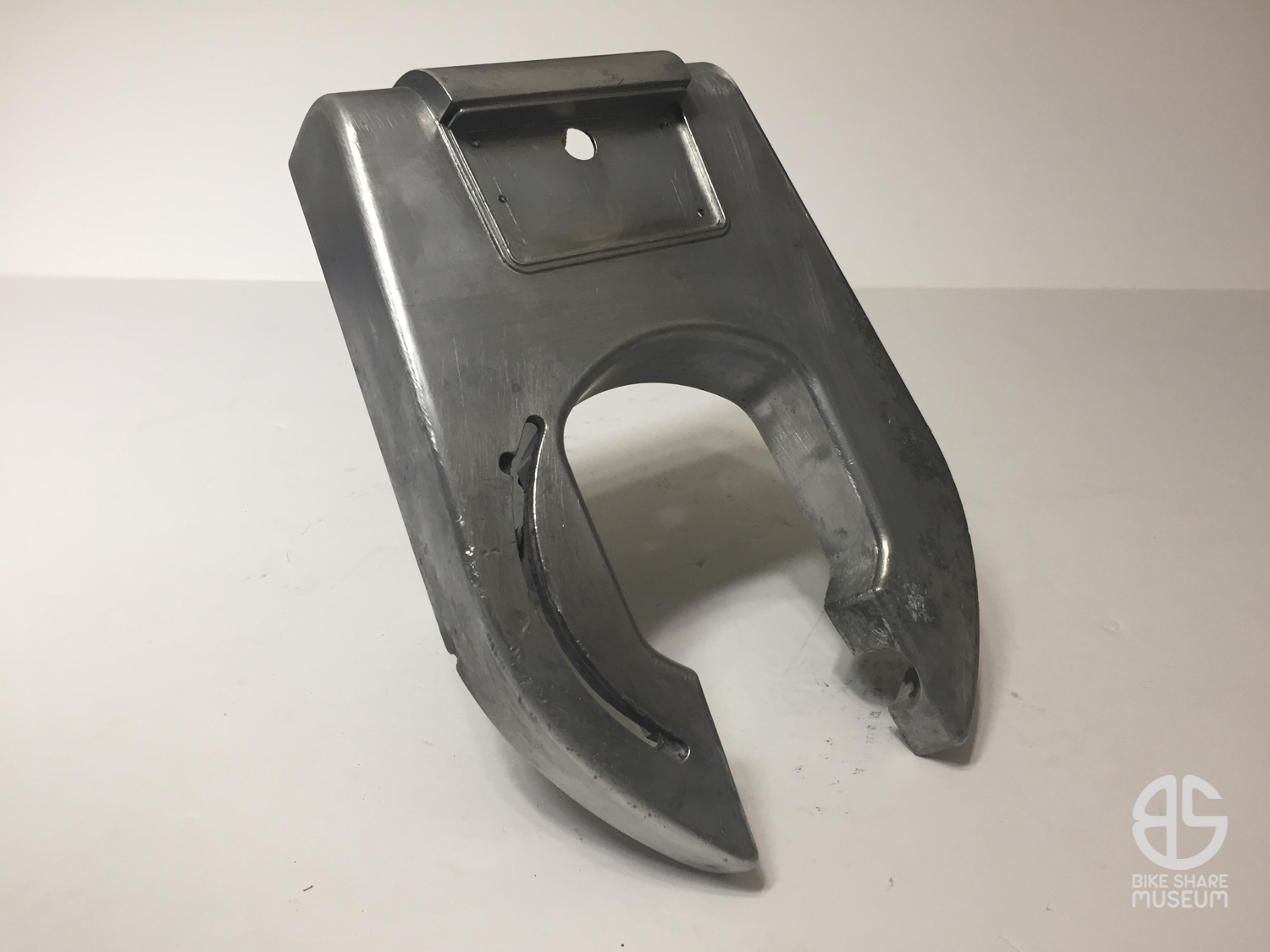
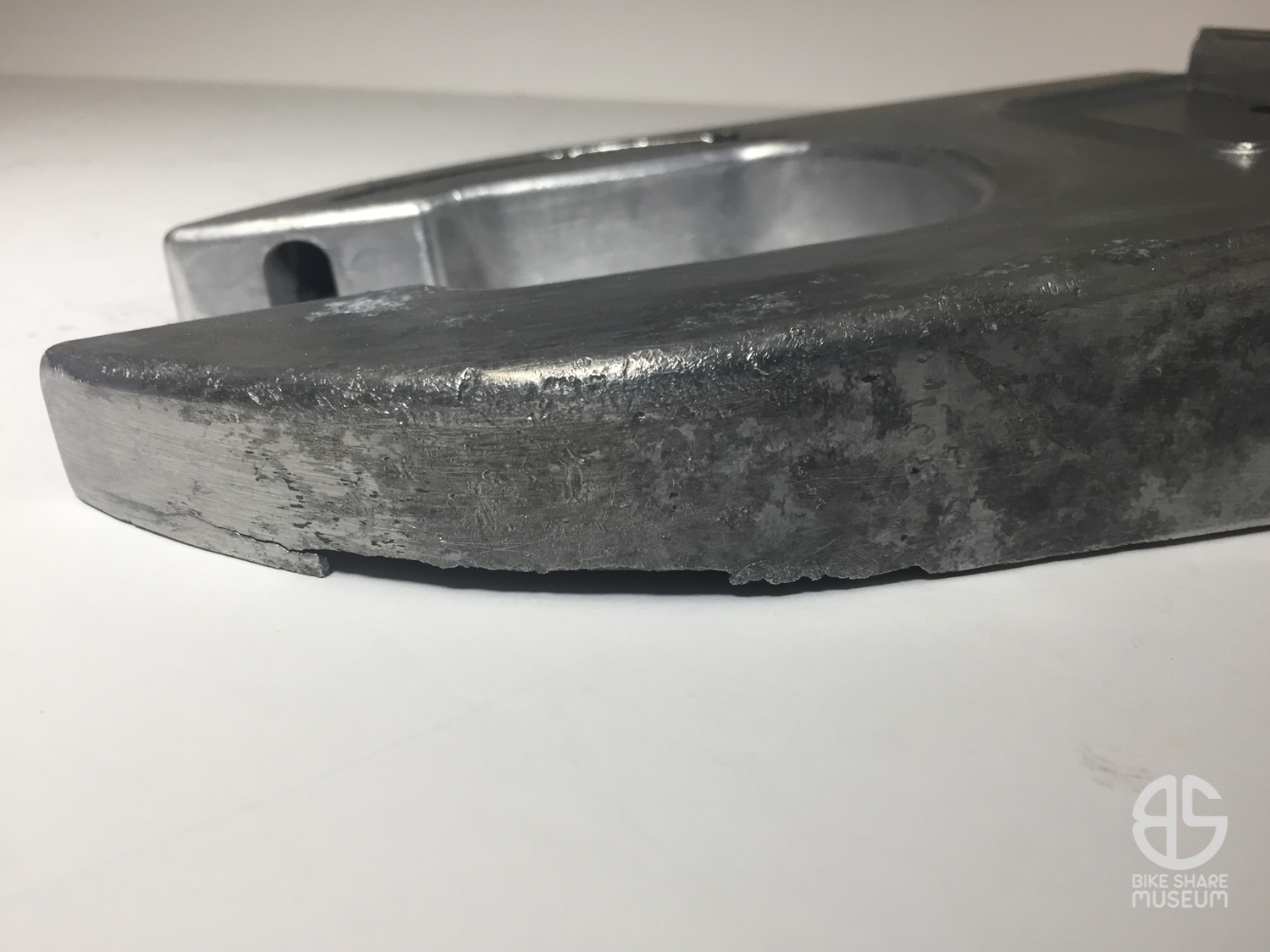
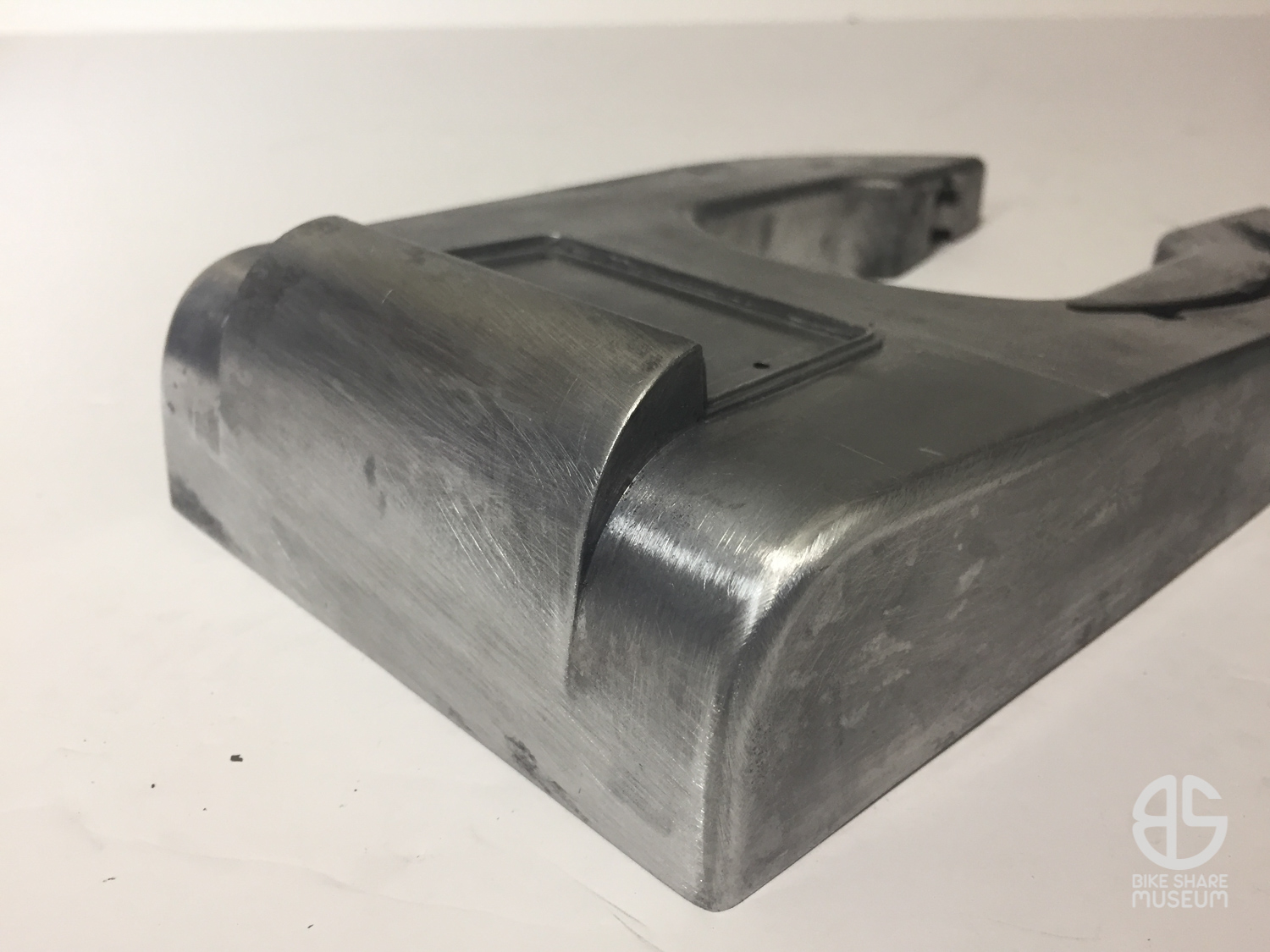
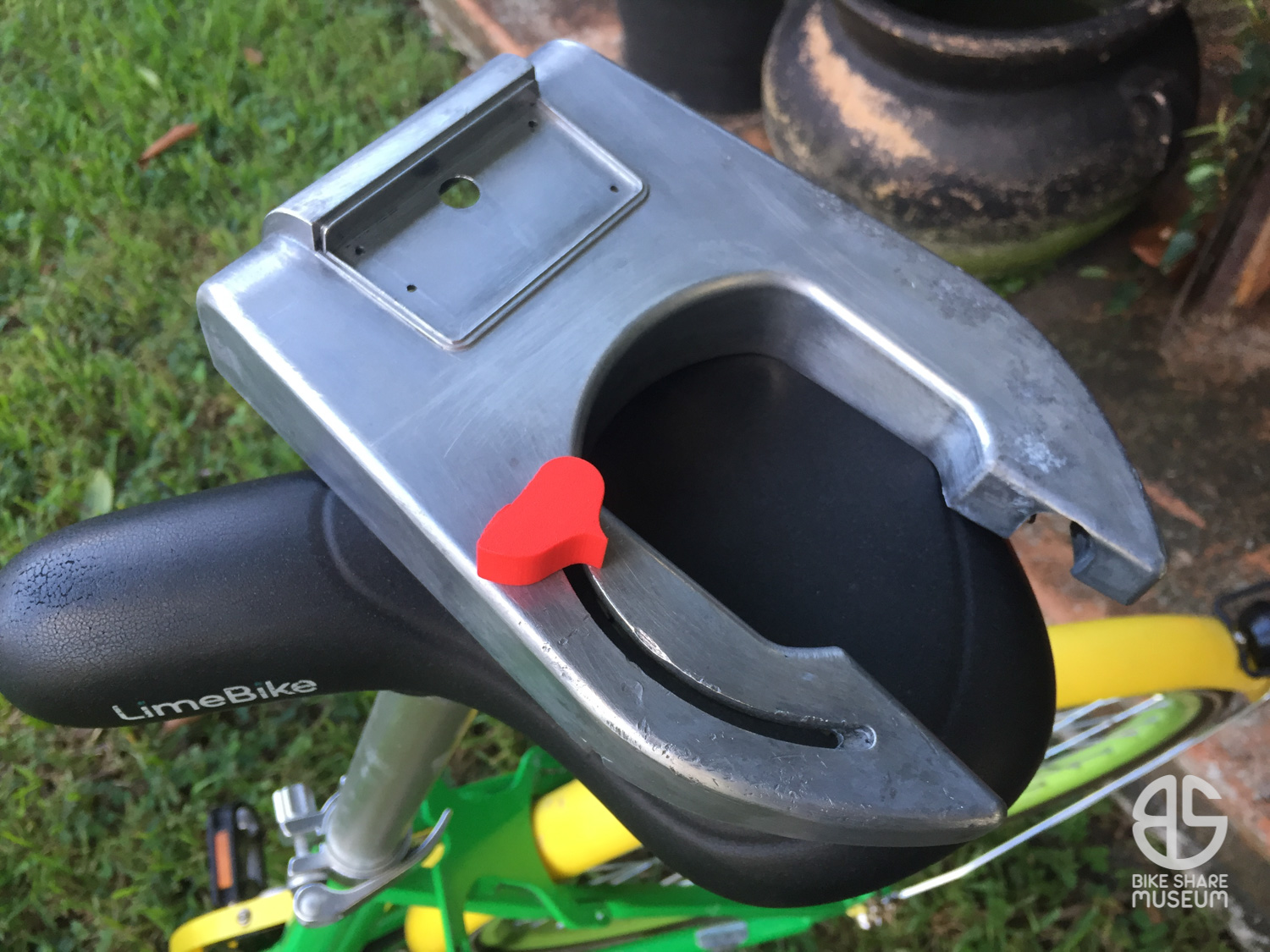
A few friends who do TIG welding took a look, then COVID-19 happened, and their access to a TIG welder was cut off. I decided to reveal the otherwise completed bike as-is.
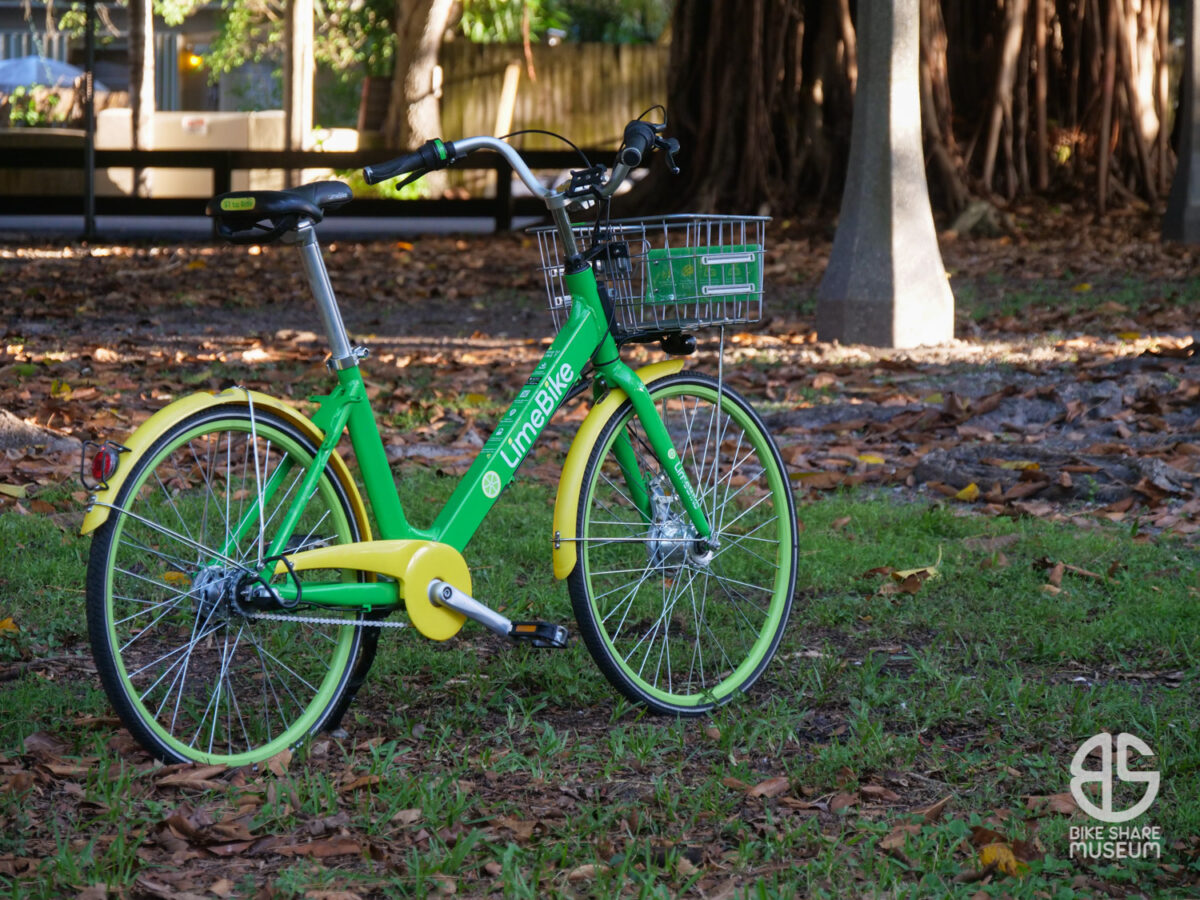
But lo and behold, a full two years after vanishing from Miami-Dade, Parks called me up. Two more LimeBikes had popped up…and one had a lock. The ring lock had been vandalized and cut, but it was cosmetically perfect otherwise.
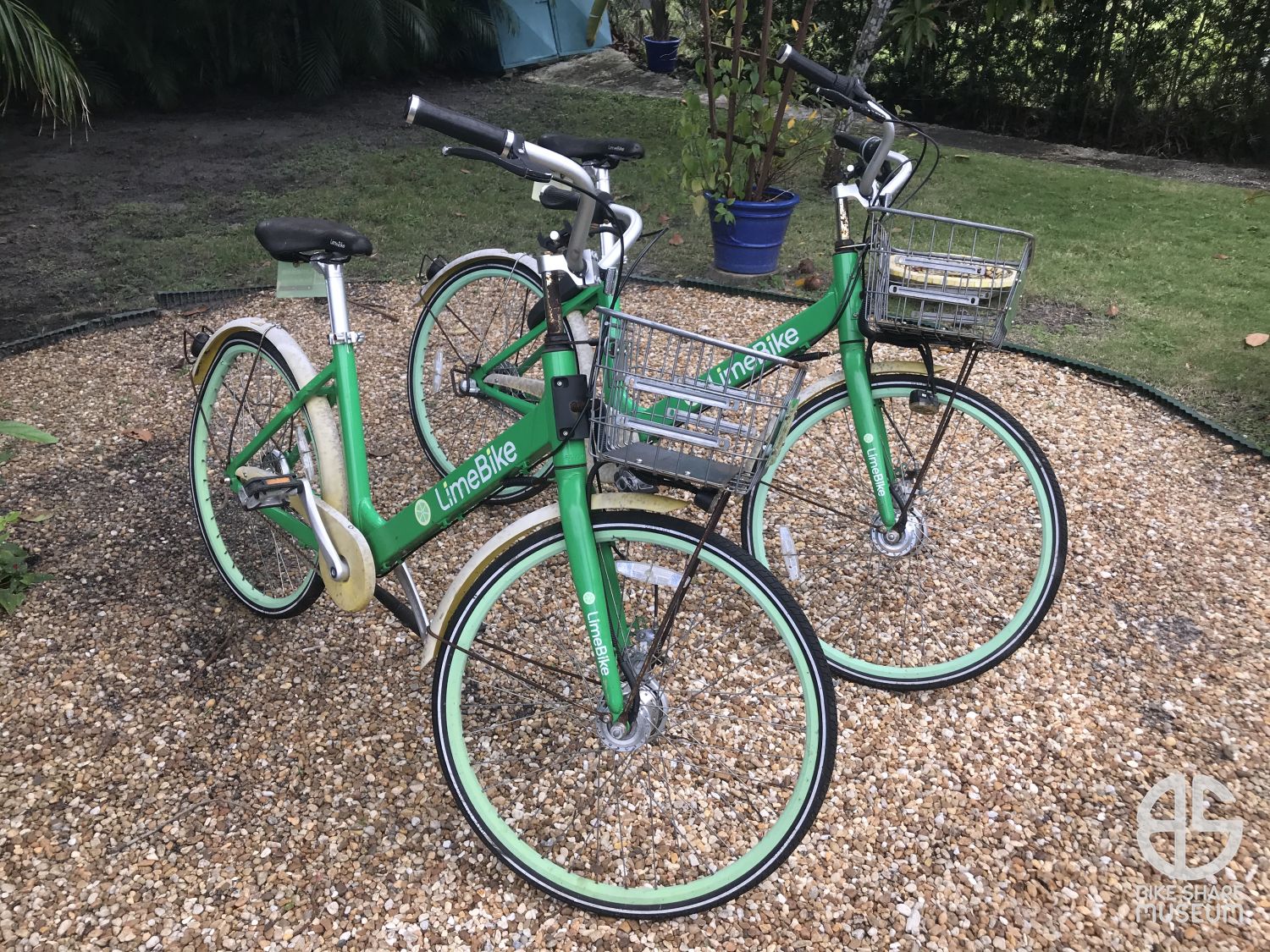
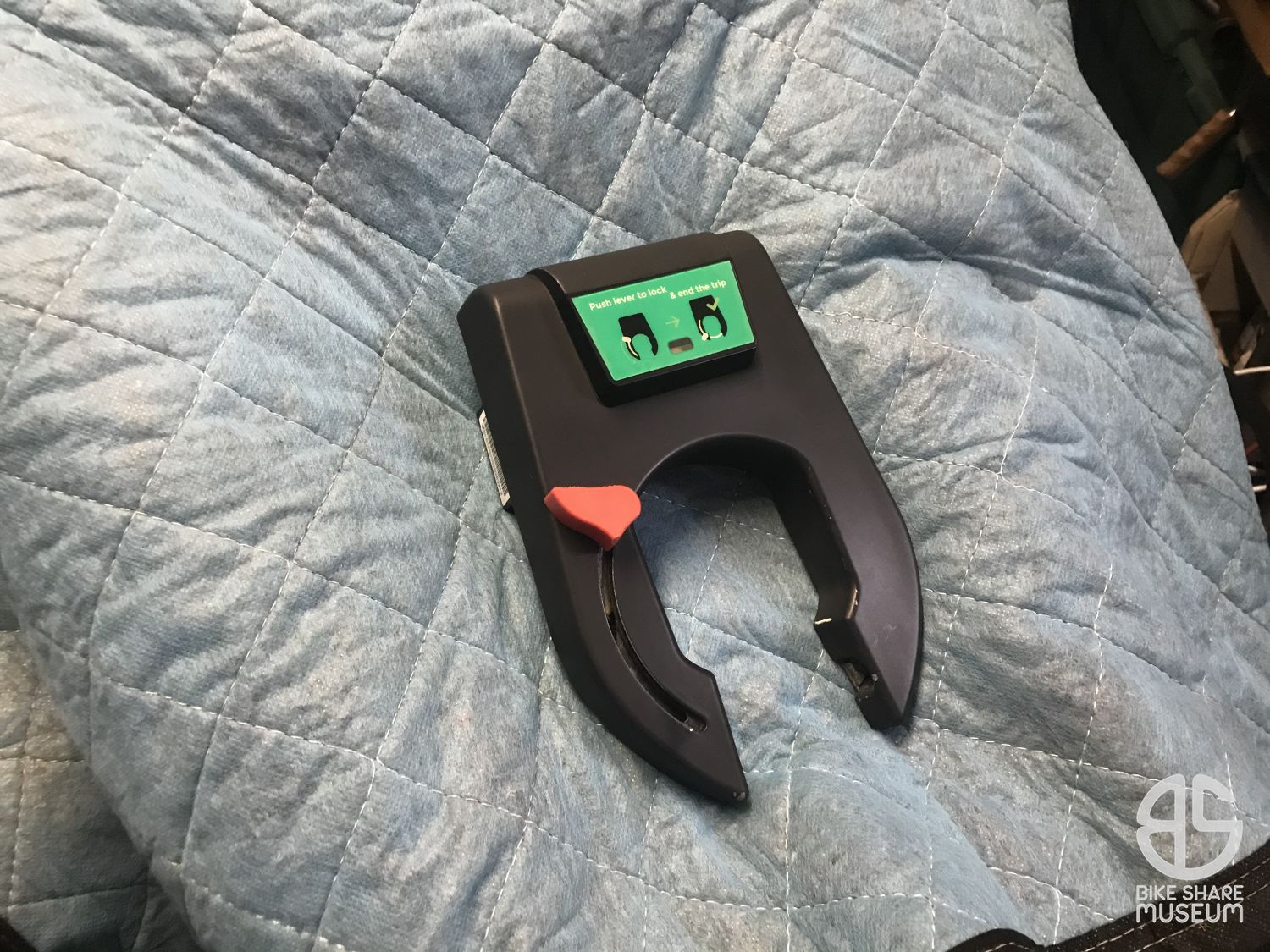
Each of them still retained a saddle Q/R code, so one was added to #122-949. It’s not the correct one for it, but finally – after a year and a half of waiting and tinkering – the Museum’s Lime-B is complete.
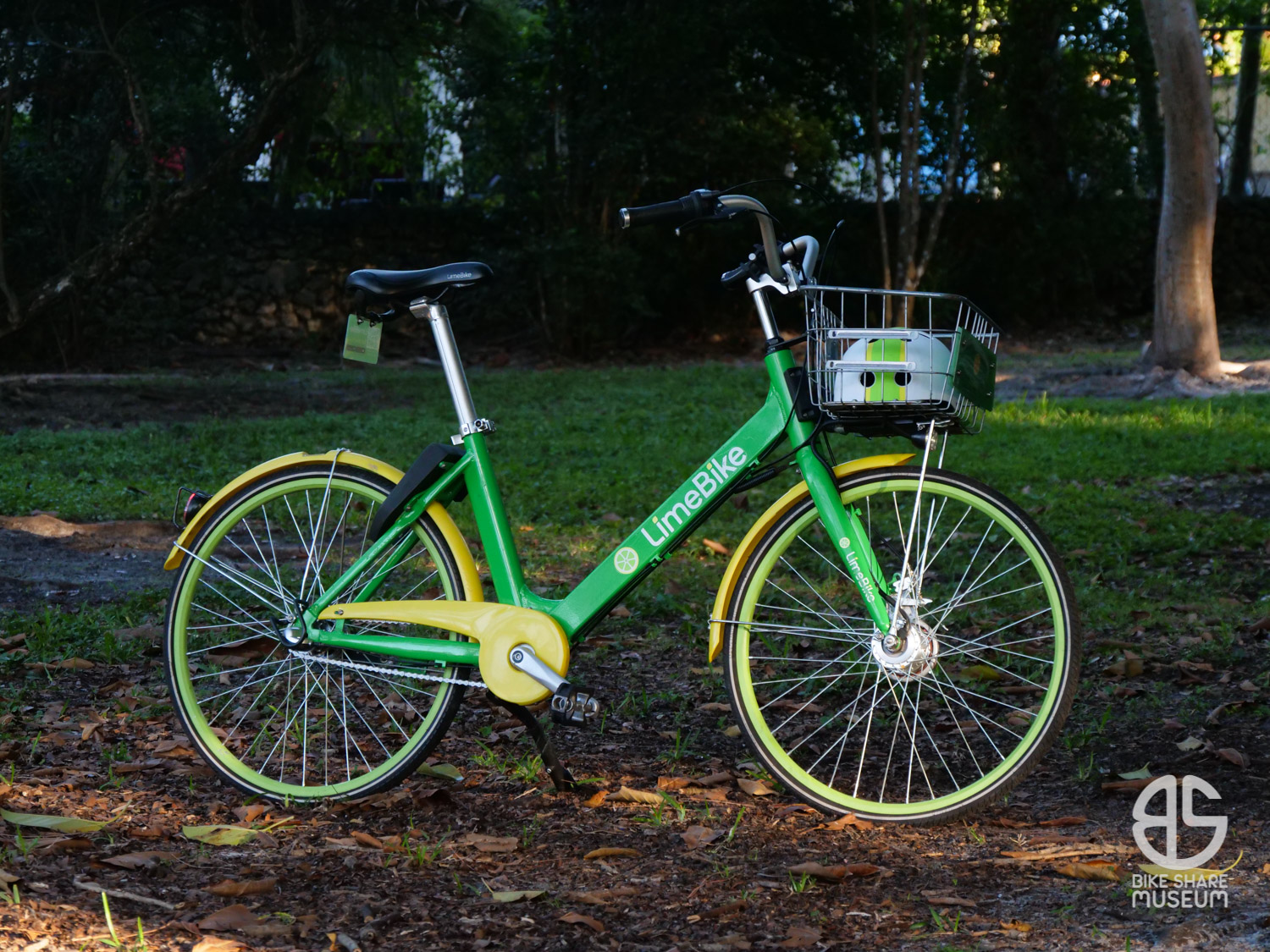
On that note, let’s talk about the legacy of the Lime-B for a moment.
Functionally, Lime-Bs are extremely simple bikes. Their front band brake (the rear is an external drum) are decent enough (Note that 3 and 8-speed models received a roller brake in the rear), but if it isn’t set up just right, they’ll drag and make riding a chore. But that goes for any band brake dockless bike, and ofos are notorious for this too.
When set up as a singlespeed, the Lime-B is almost more spartan than most ofos (save for the Shanghai Phoenix), and their gearing is so excessively low as to be left behind in a small-town parade…in 3rd gear.
Seriously, these bikes have 28 tooth chainrings paired with 19t cogs on their Shimano Nexus SG-3R40 3-speed hubs. According to Sheldon Brown’s gearing calculator, that means a Lime-B with a Nexus 3-speed is pushing 26.9, 36.7, and 50 gear inches, respectively. Someone must have expected every Lime to go uphill.
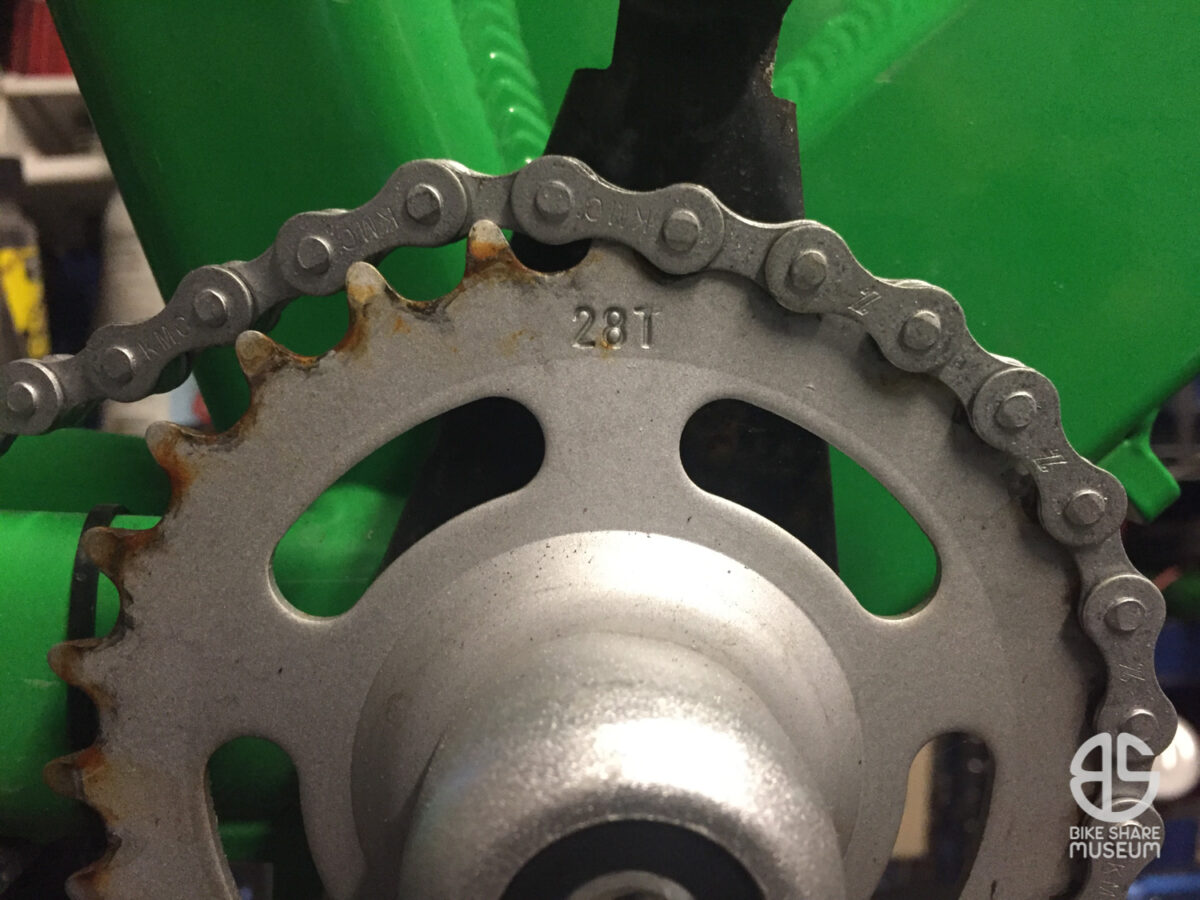
Despite this super low gearing, it is equipped with oodles of fork rake. It makes the front end handling skittish when starting off and difficult – for casual riders – to keep in a straight line. Why so much rake for a bike geared to go so slow? Was it an error that wasn’t caught when the first-generation Lime-B was re-engineered with the smaller ISO 559/26″ wheels?
At any rate, these are not characteristics that make for a share bike with a lasting impression. Far from it. But for what it lacks in substance, the Lime-B makes up in character.
Without question, the Lime-Bs (and first-gen E’s) will forever be remembered as the happiest looking share bikes of all time. The tropical yellow and green livery makes a Lime instantly recognizable from half a mile away and spruces up an otherwise very utilitarian frame.
Even the first-generation B – which sported a black chainguard and BMX-inspired aluminum wheels – has a hard time matching its immediate successor for sheer charisma.
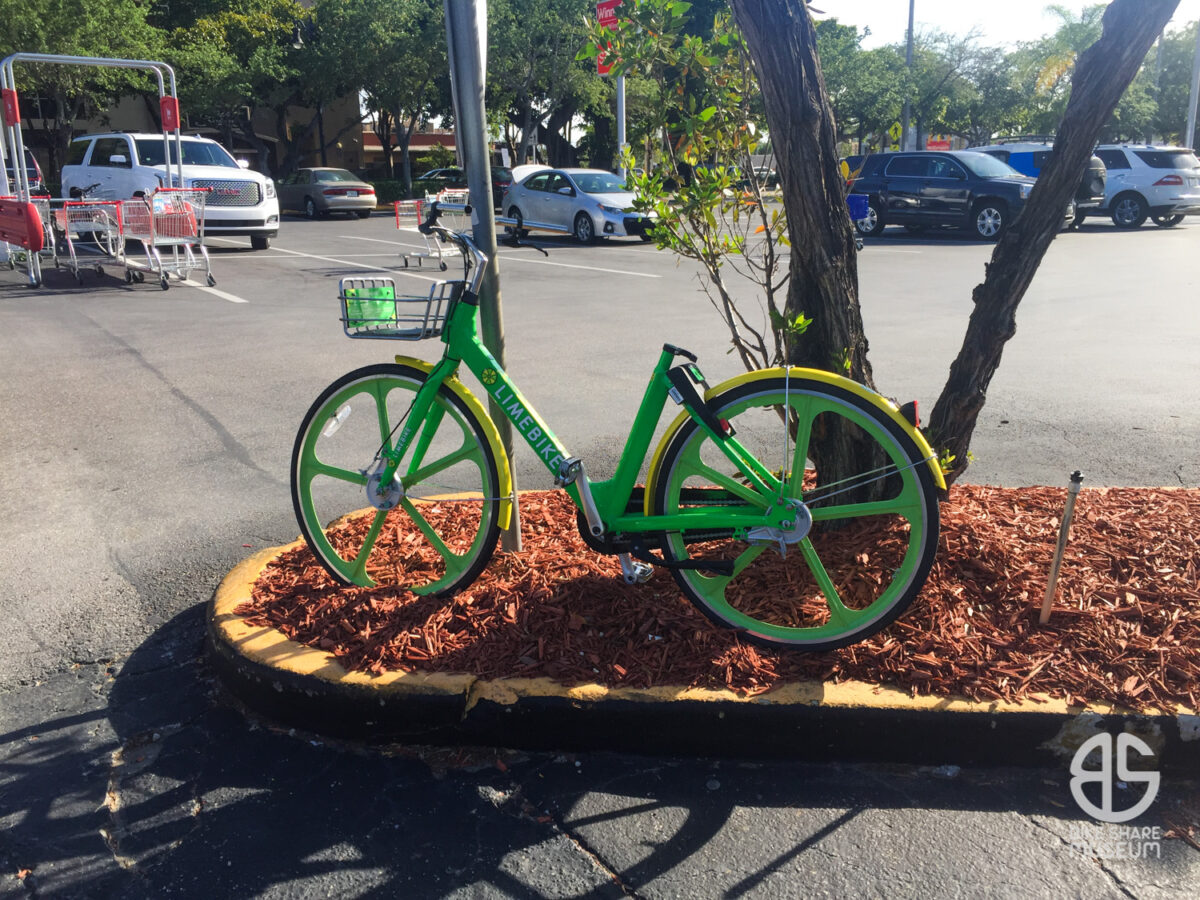
I never understood why Lime scooters didn’t continue the same color scheme. Leaked photos of a prototype, 3rd-generation Lime-E suggest that future bicycles will probably carry the blander, white/green/grey scheme of the scooters.
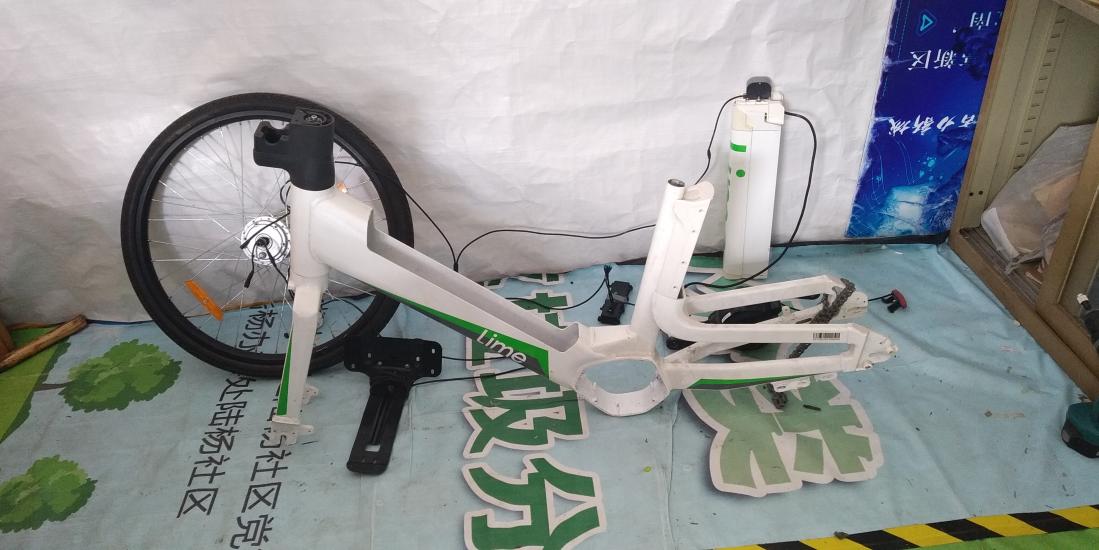
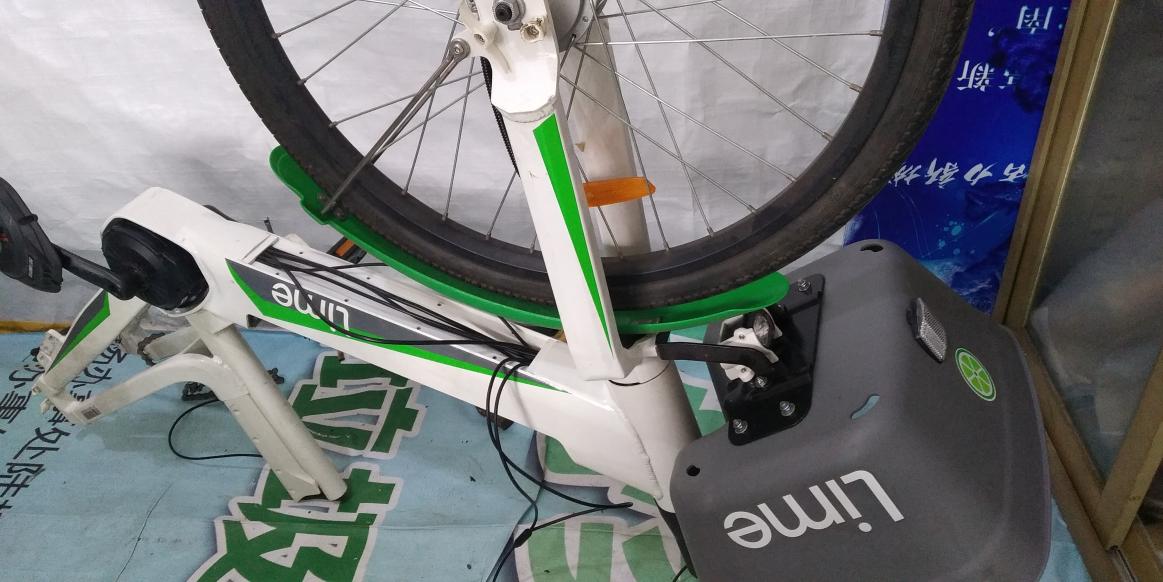
Fine colors for a website. Not for a dockless bike. Either way, there’s no guarantee that this model will ever get past the prototype stage following the acquisition of JUMP and the SoBi e-bike.
But I’m being a bit hard on the Lime-B. The second generation bike did get some very important details right. Their baskets are deeper and better supported than other dockless bikes. Lime chose to continue using the timelessly perfect North Road handlebar shape, even though it doesn’t help much with the front end geometry. Gen 2 seatposts (with exception to some variants with ofo/Spin style dropper posts) rival the JUMP electric bikes for diameter and strength, and they extend further than dropper posts. To round everything out, Lime’s in-house axle nuts have been such a successful theft deterrent that the design remains in use on their scooters.
Does this make up for the Lime-B’s flaws? You’ll have to decide that. We’ve never experienced the 8-speed version, which probably makes up for a lot of the shortcomings of the single and 3-speed editions.
With that, here’s a photo of one of the last intact Limes to go completely undetected in Miami-Dade County. This is #134-567, which survived “in the jungle” as late as July 2019 – almost a year after being banished from the streets – just off of Sunset Drive at 102nd Avenue. It disappeared a month later.
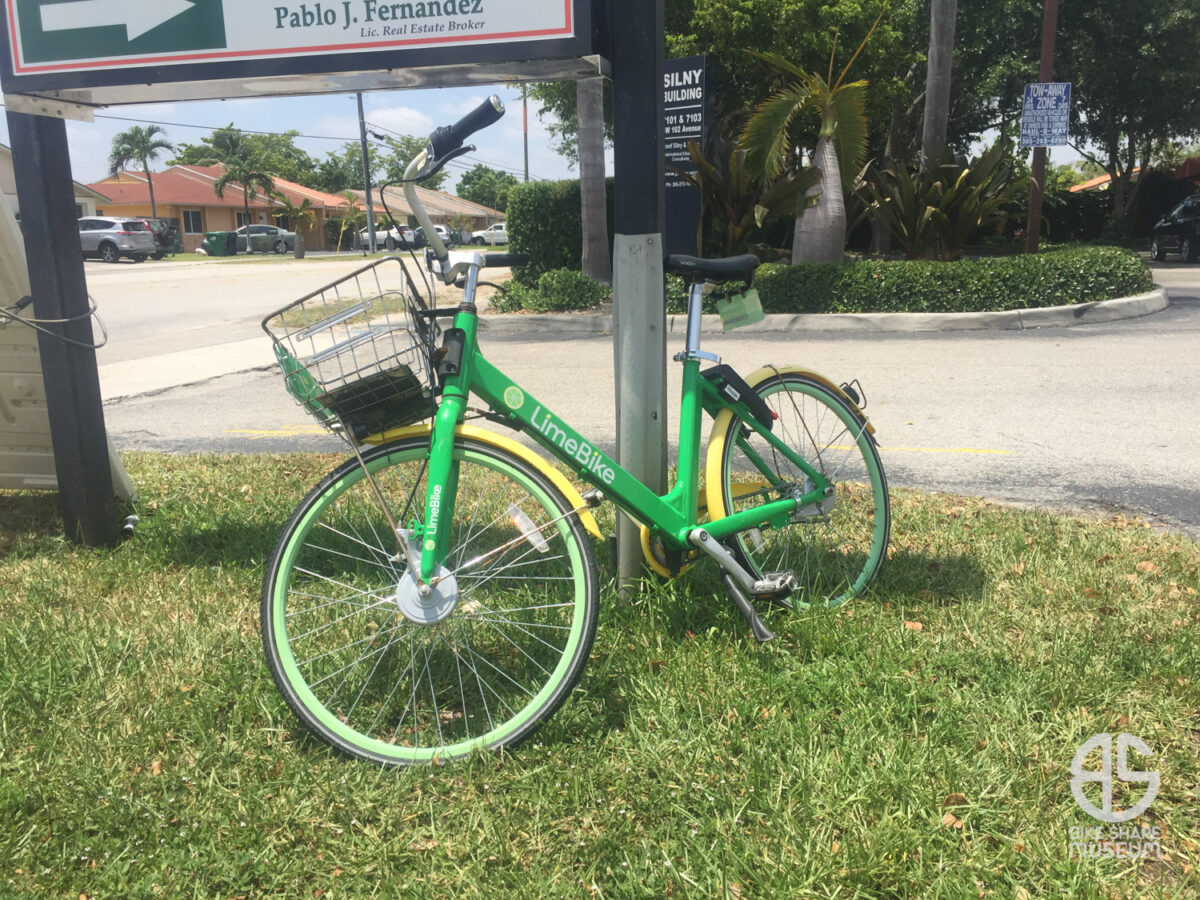
Related
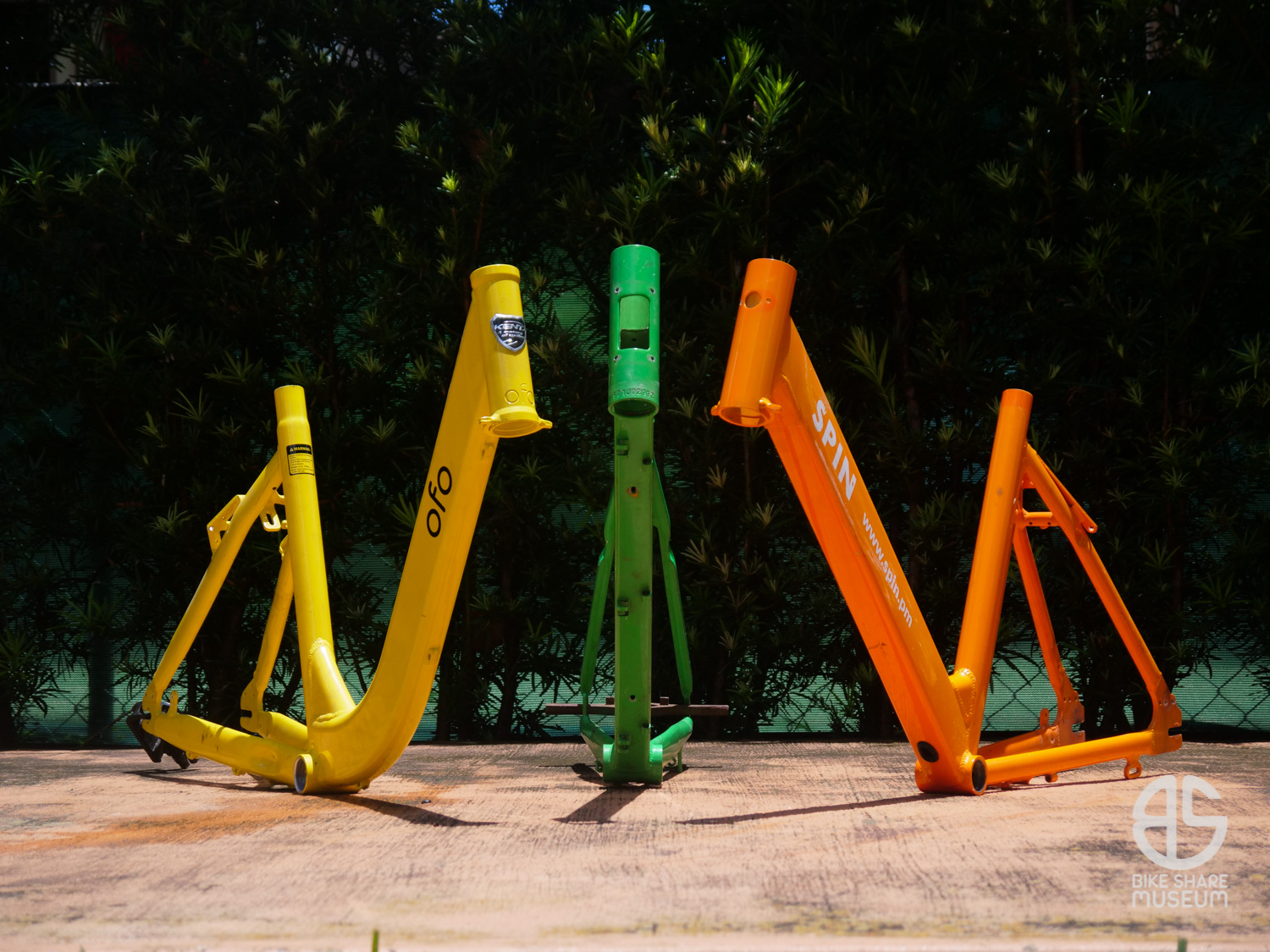
Are shared bikes really so heavy that they have no merit as a used bike, or are the weight weenies busy spreading fake news? We find out.
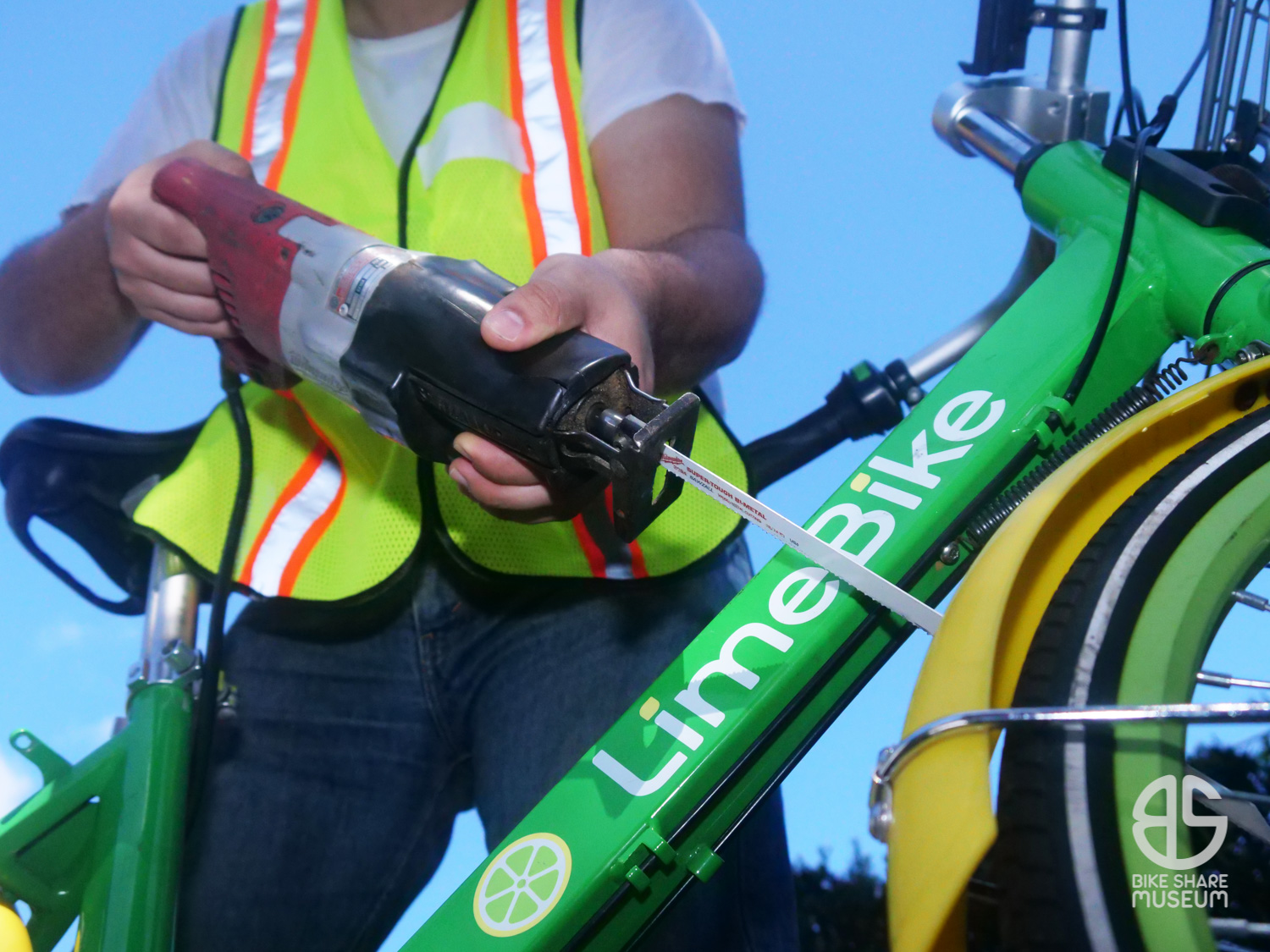
I’ve mentioned many times that it is virtually impossible to get a LimeBike – legally, of course – for preservation.


